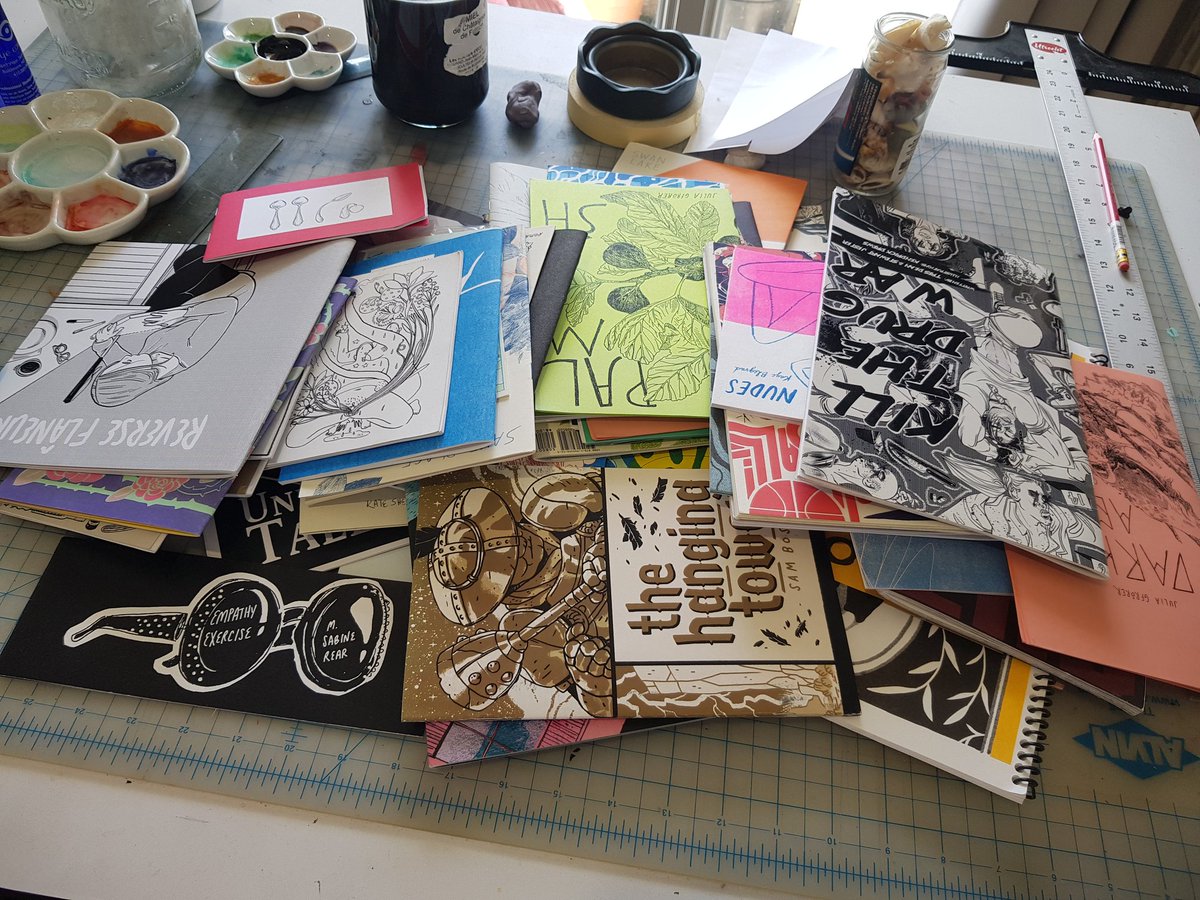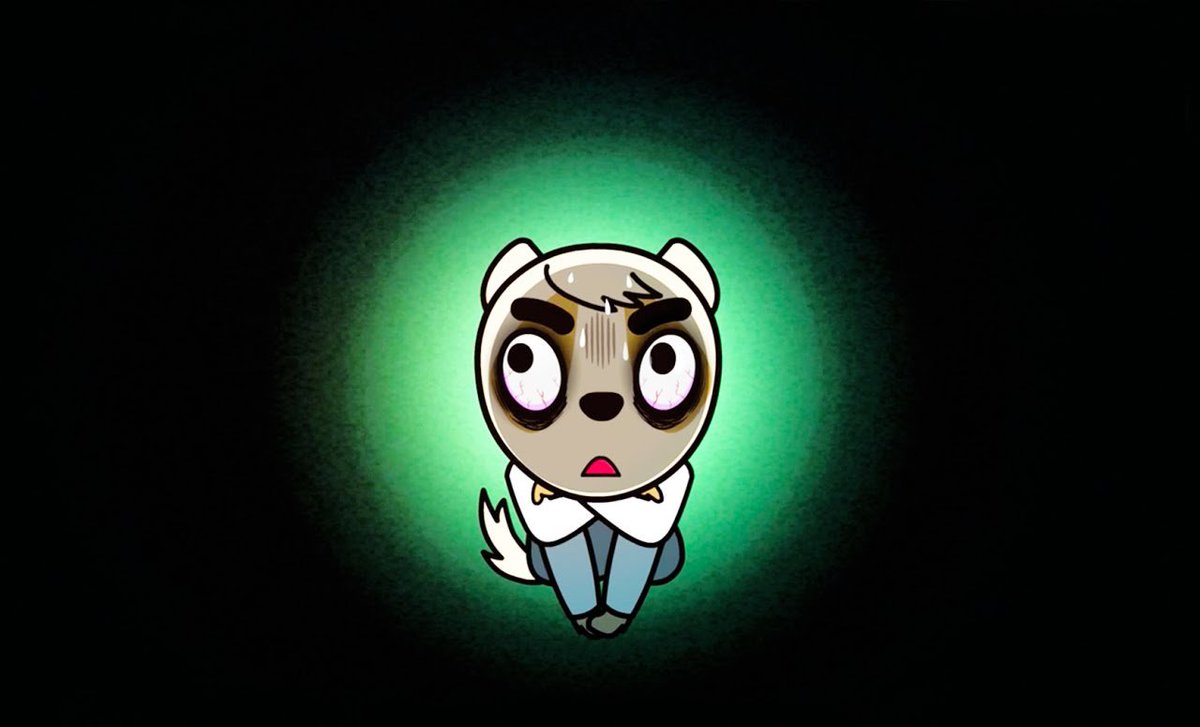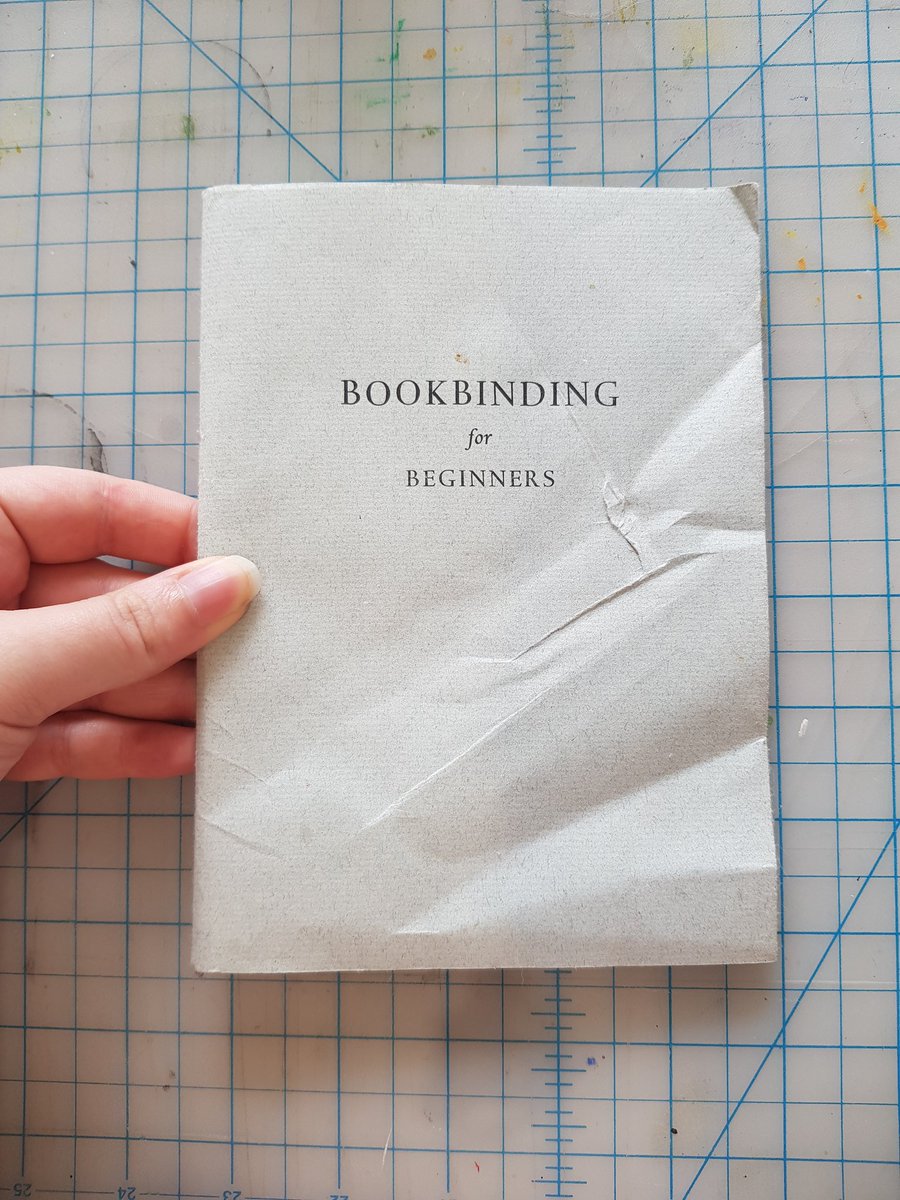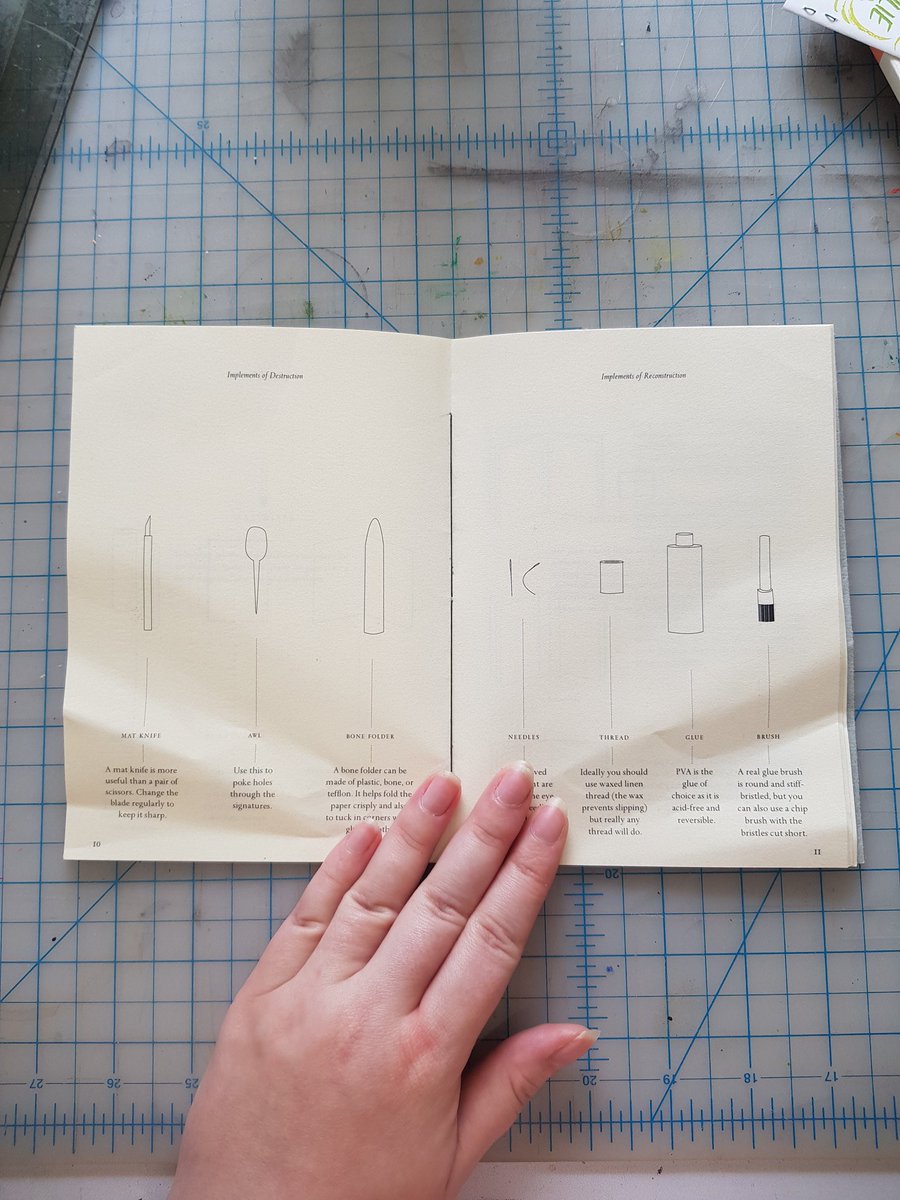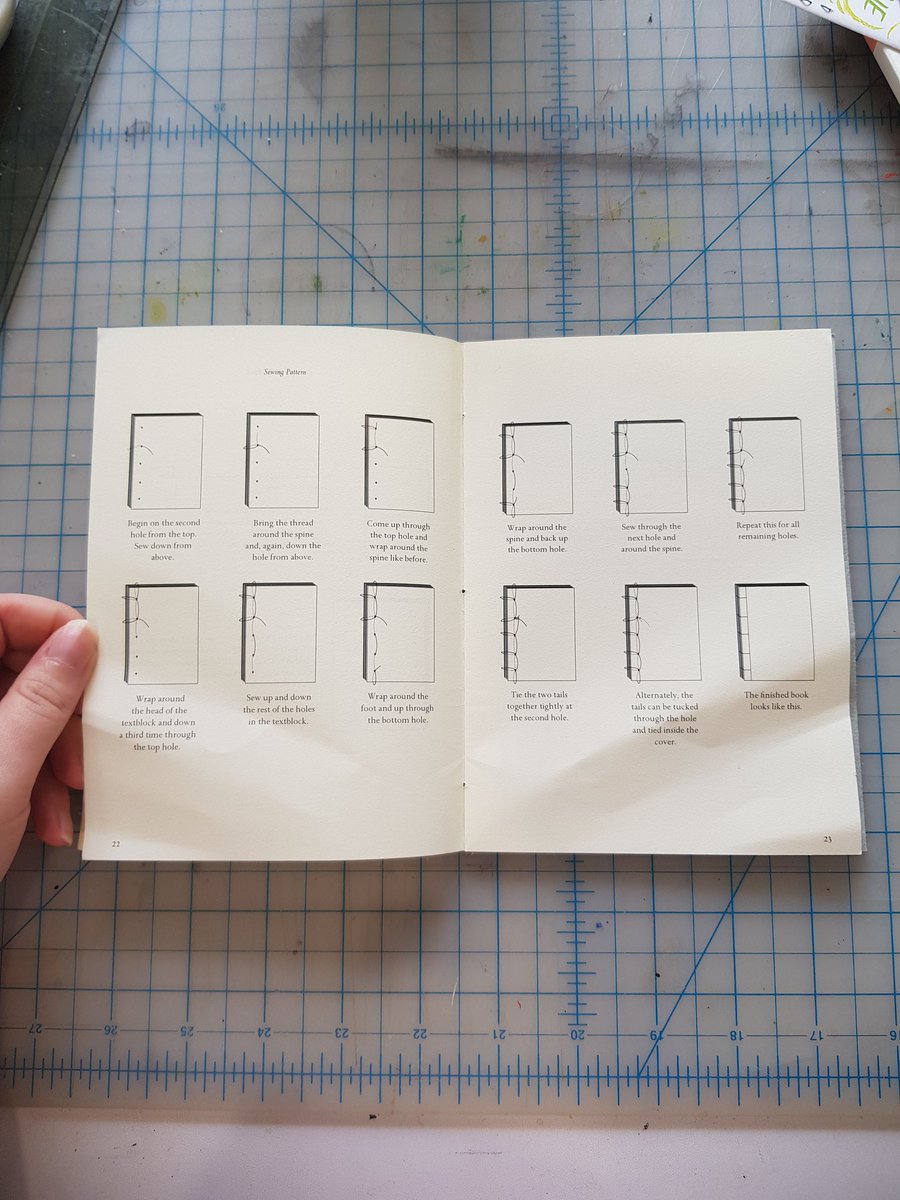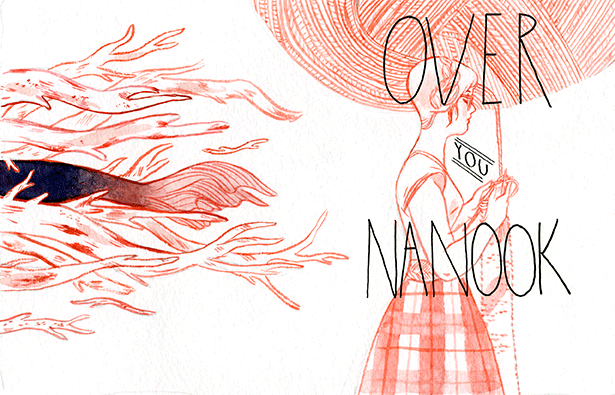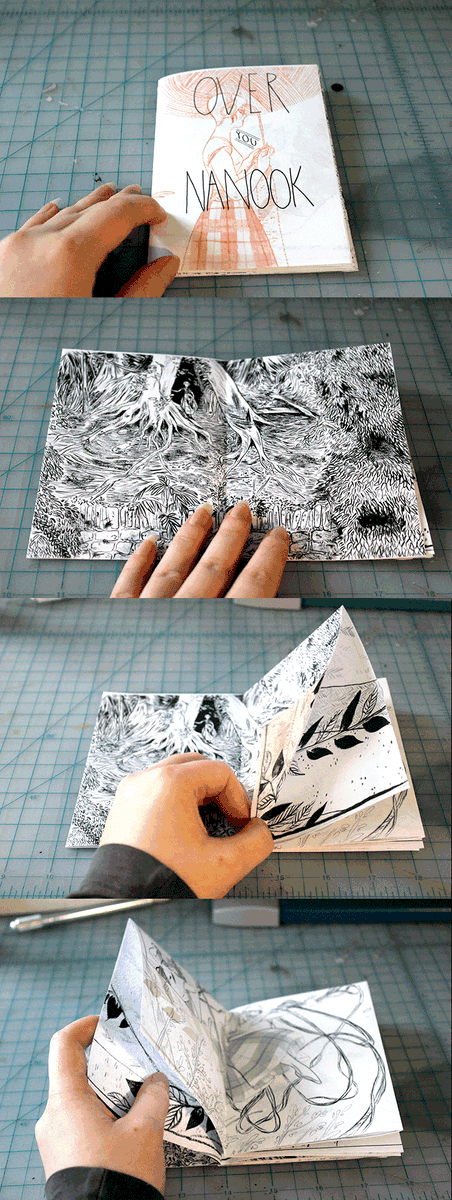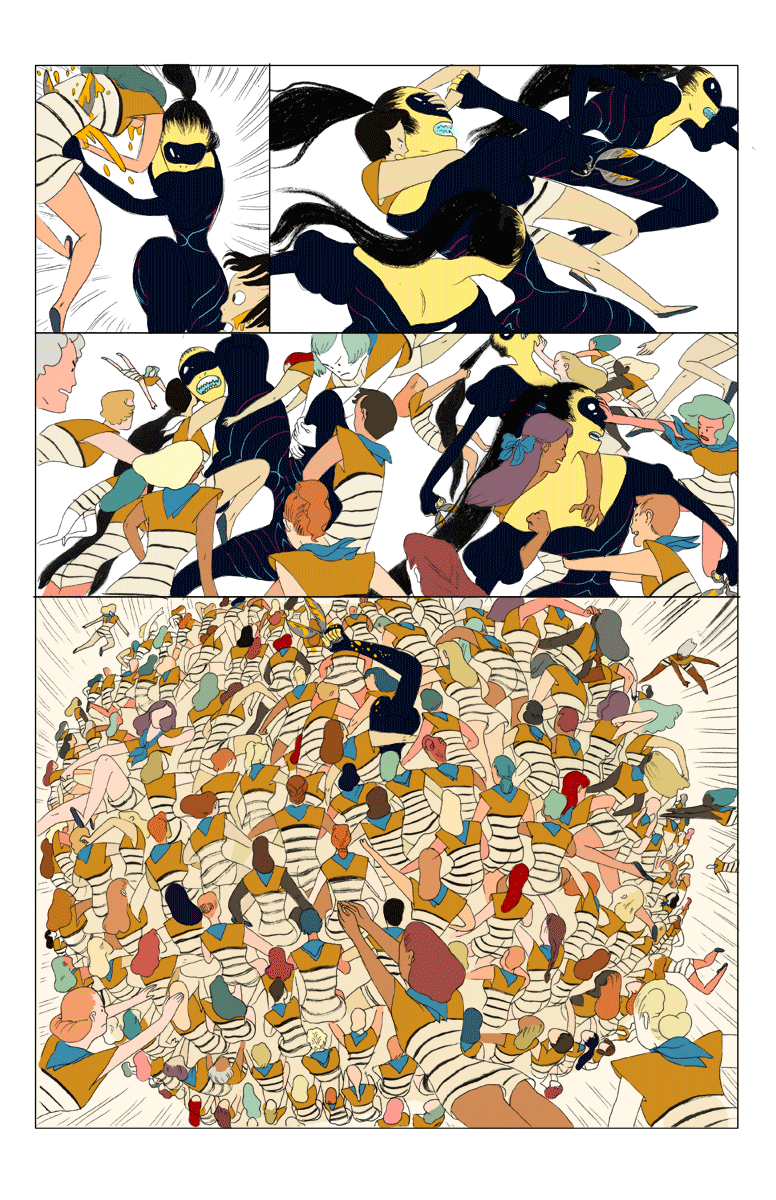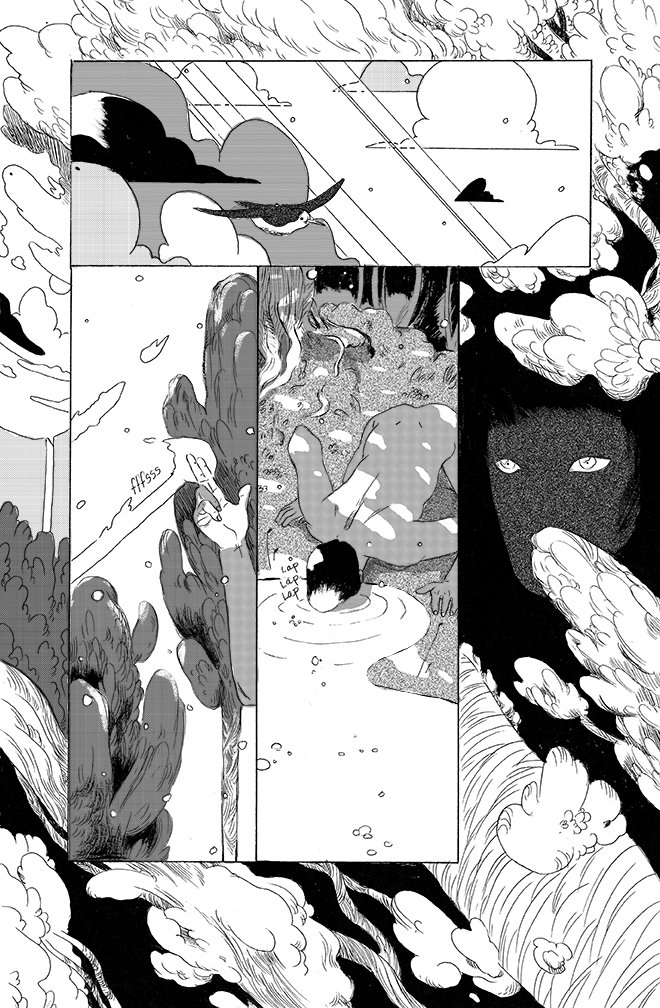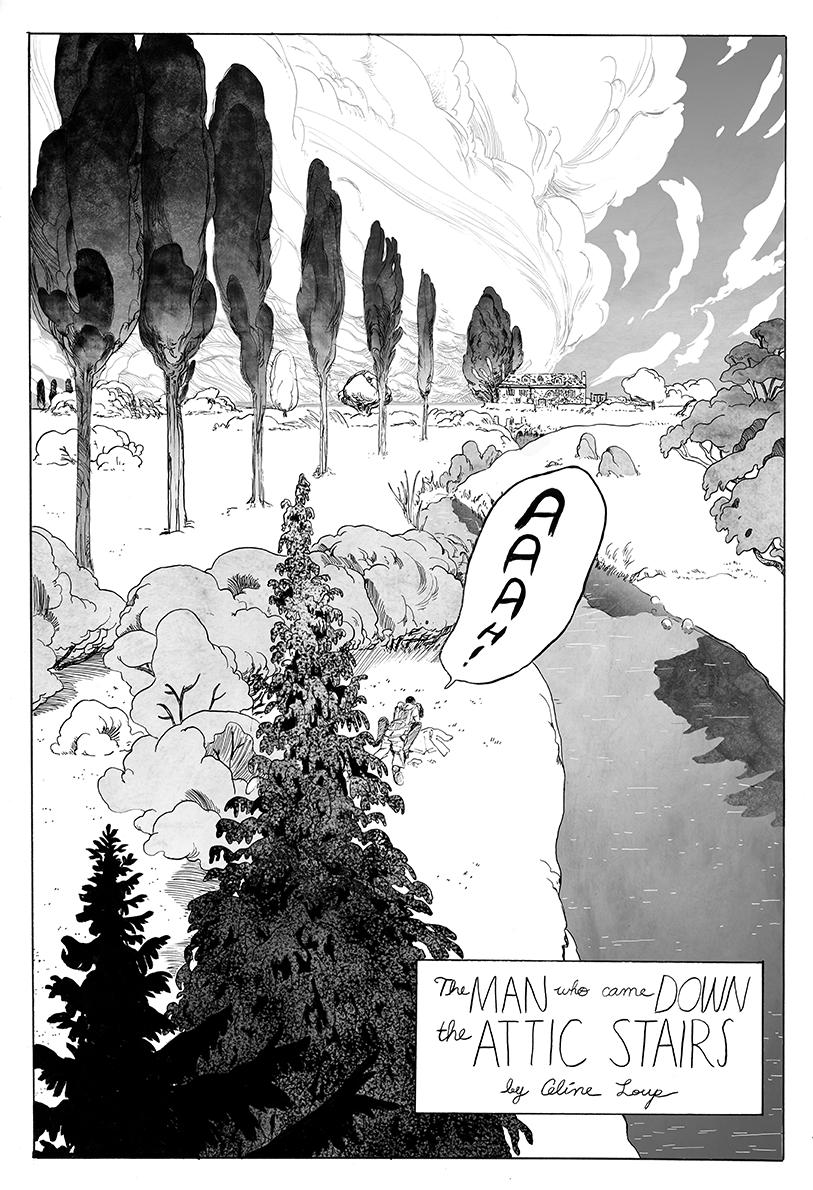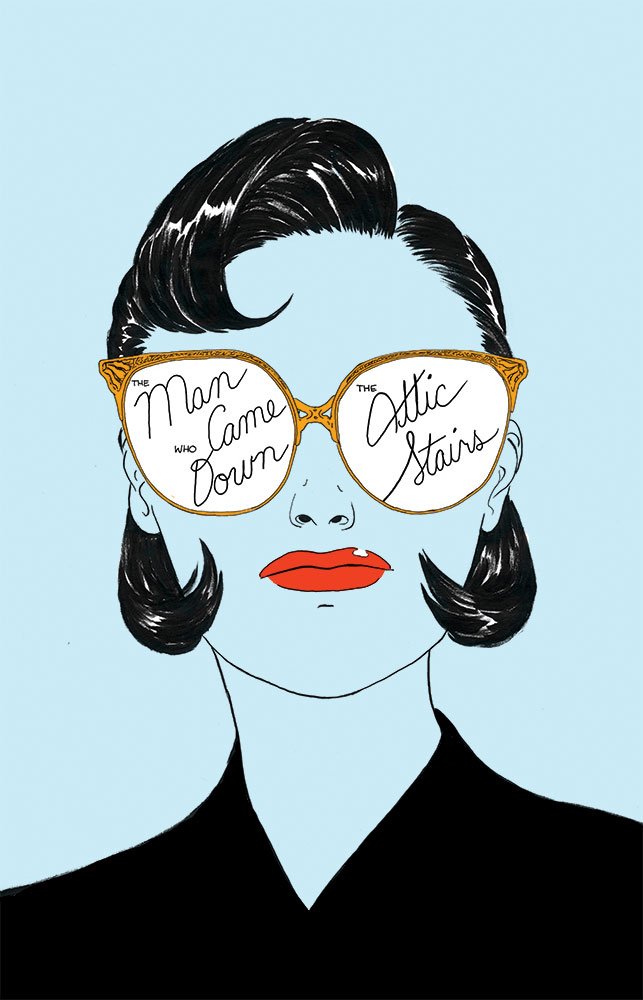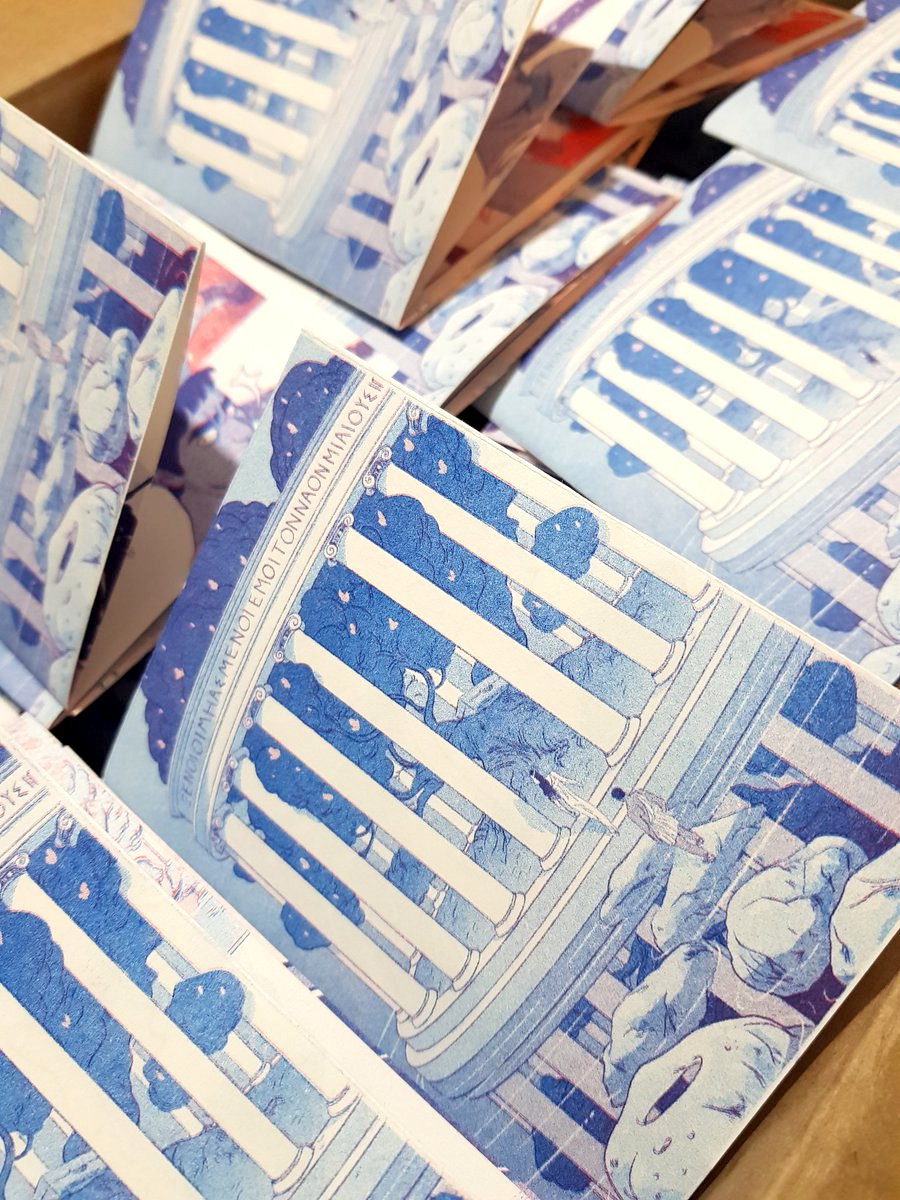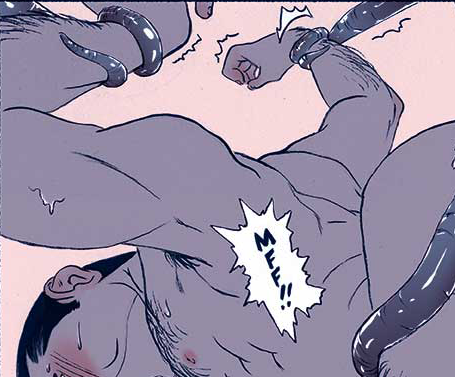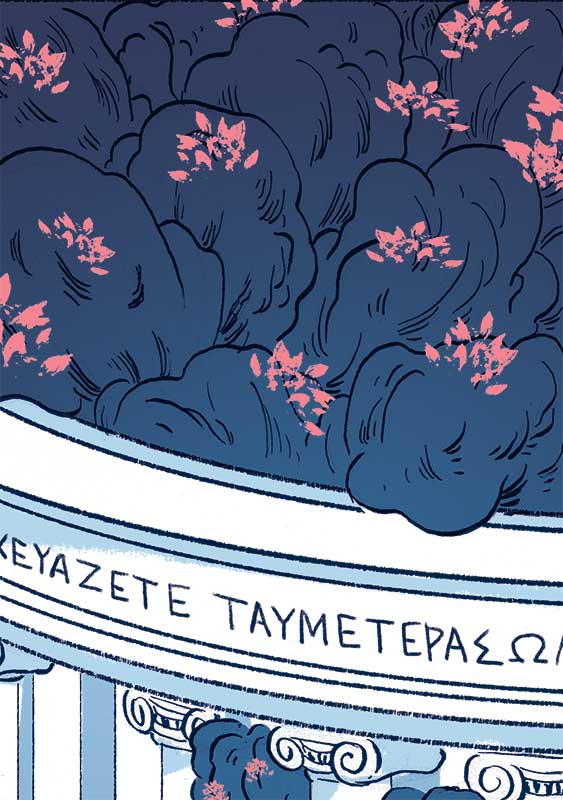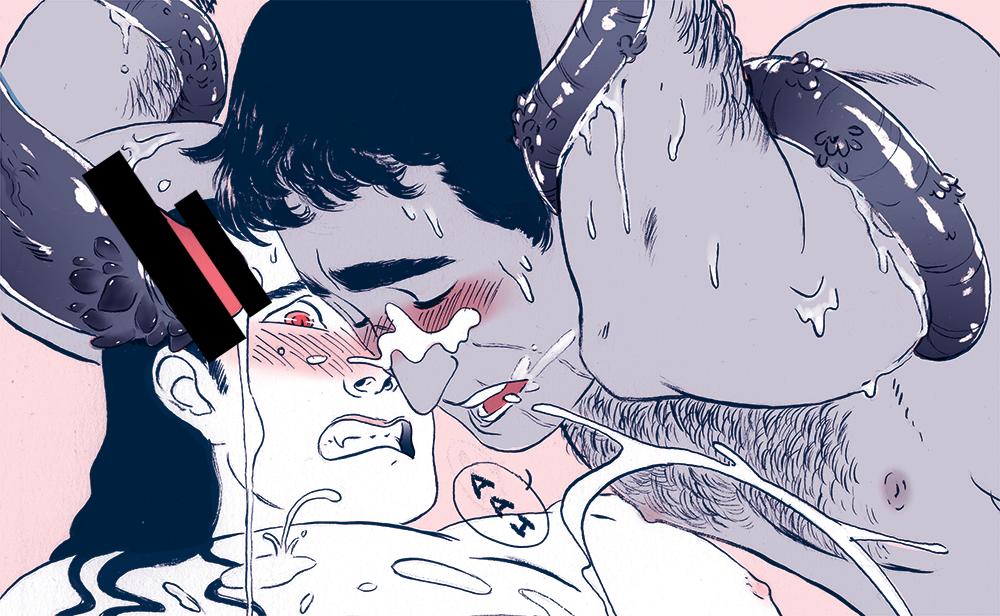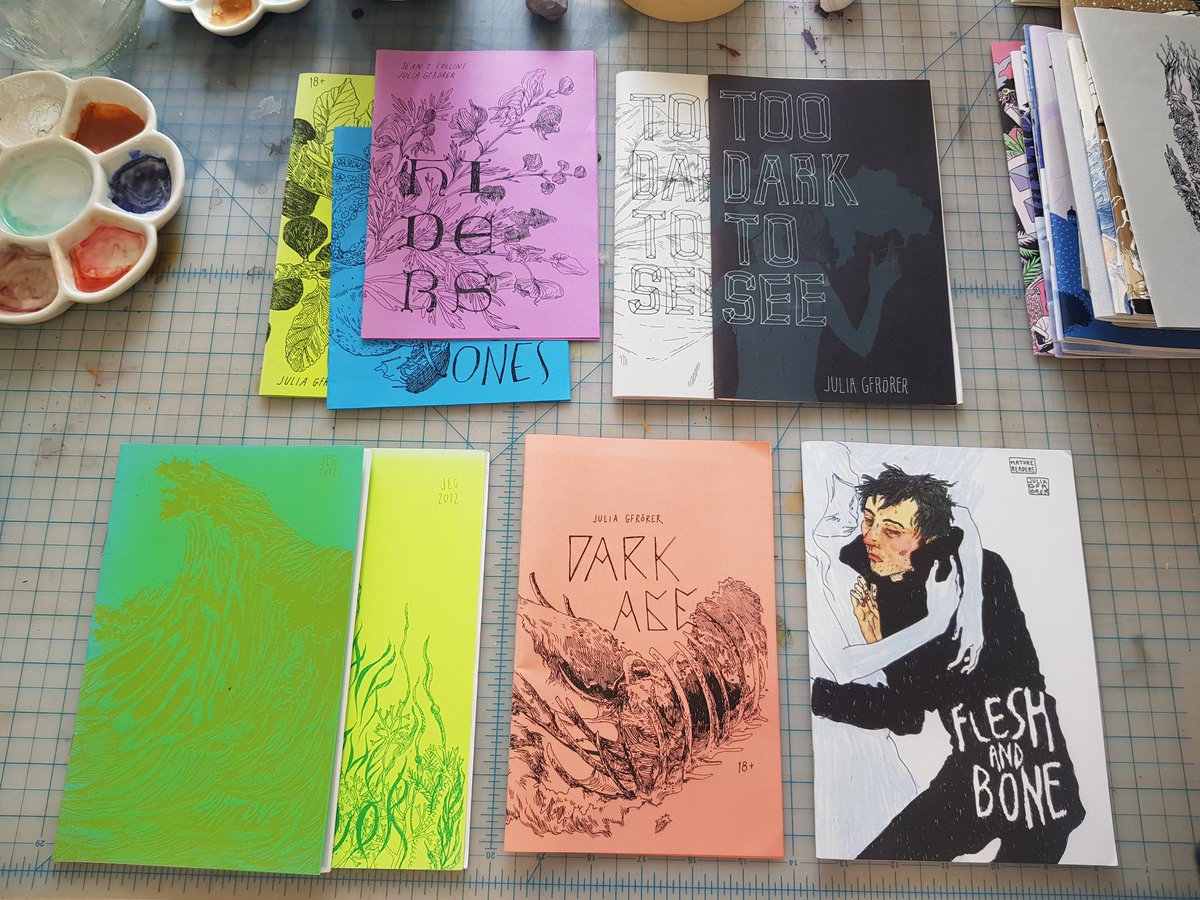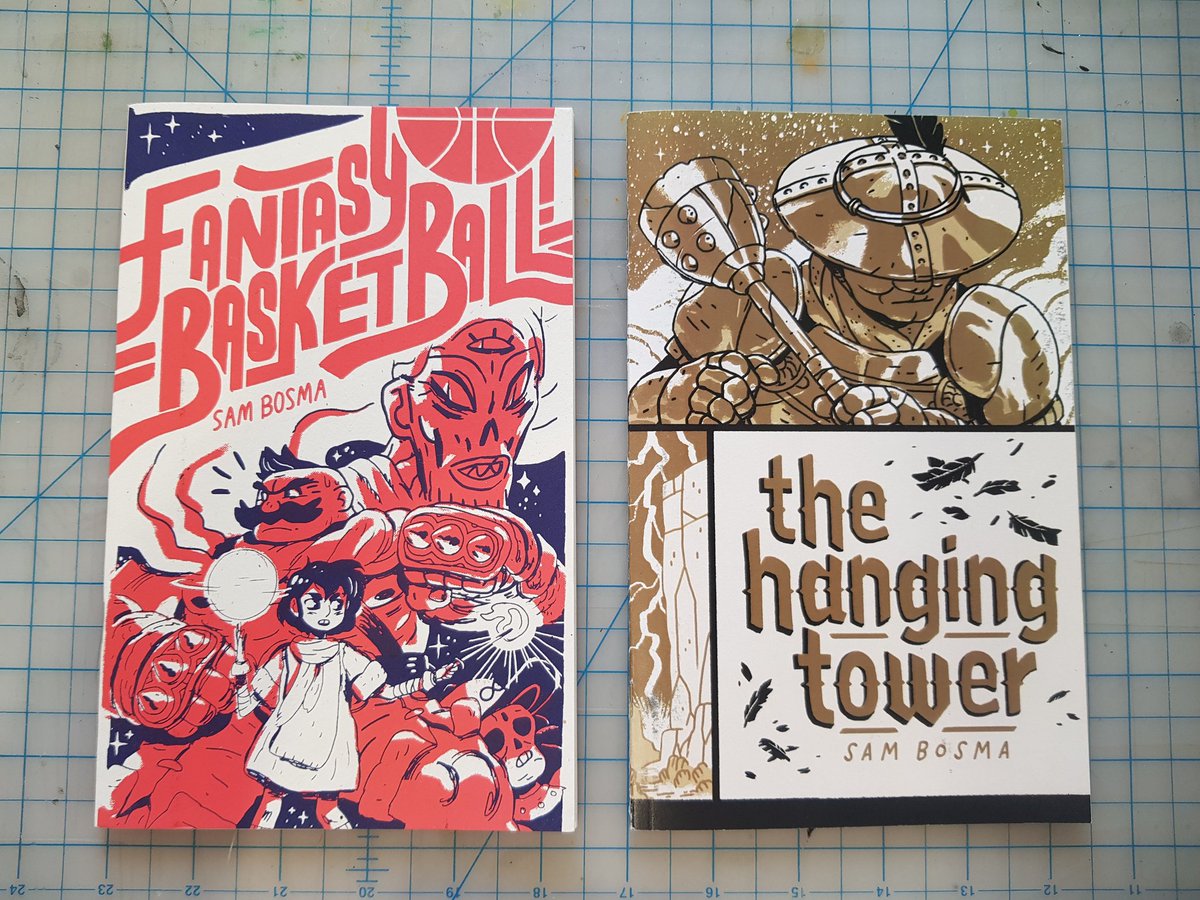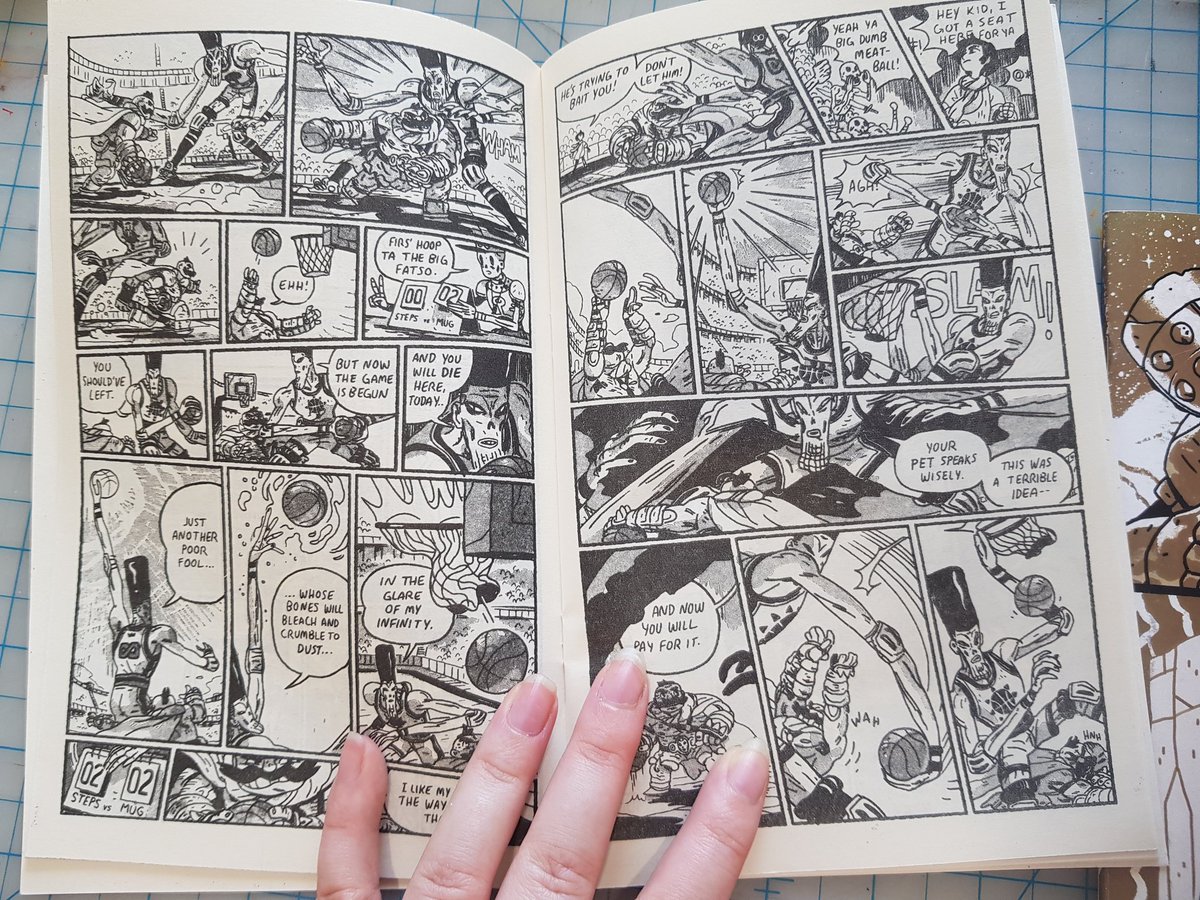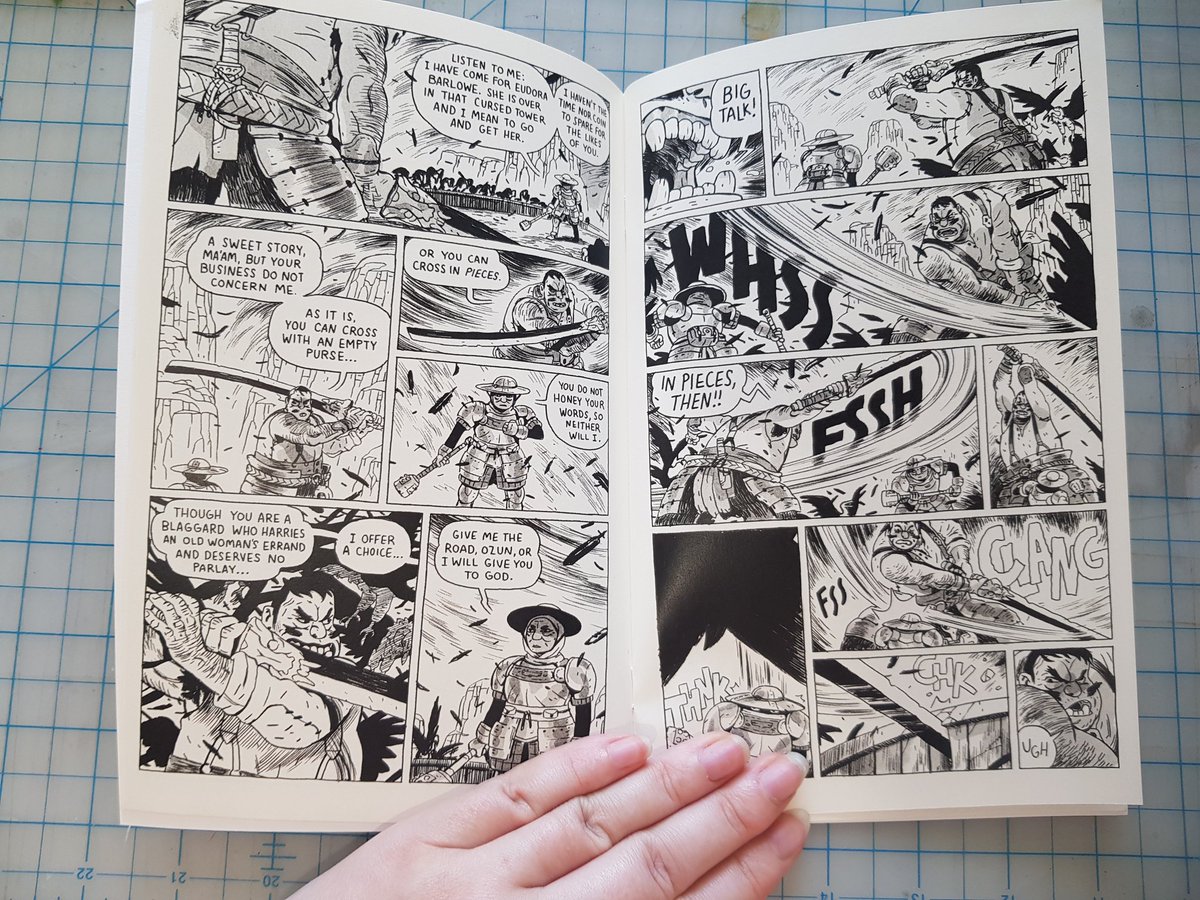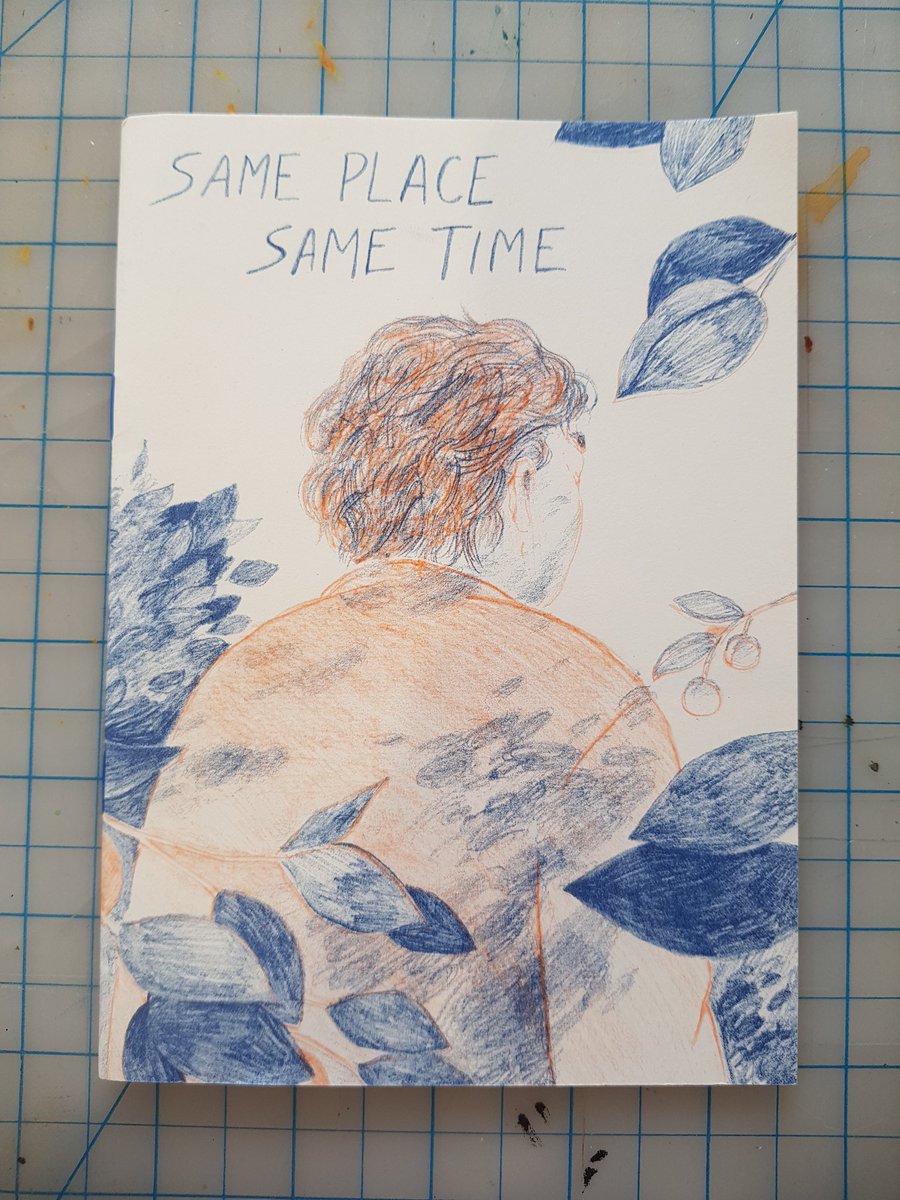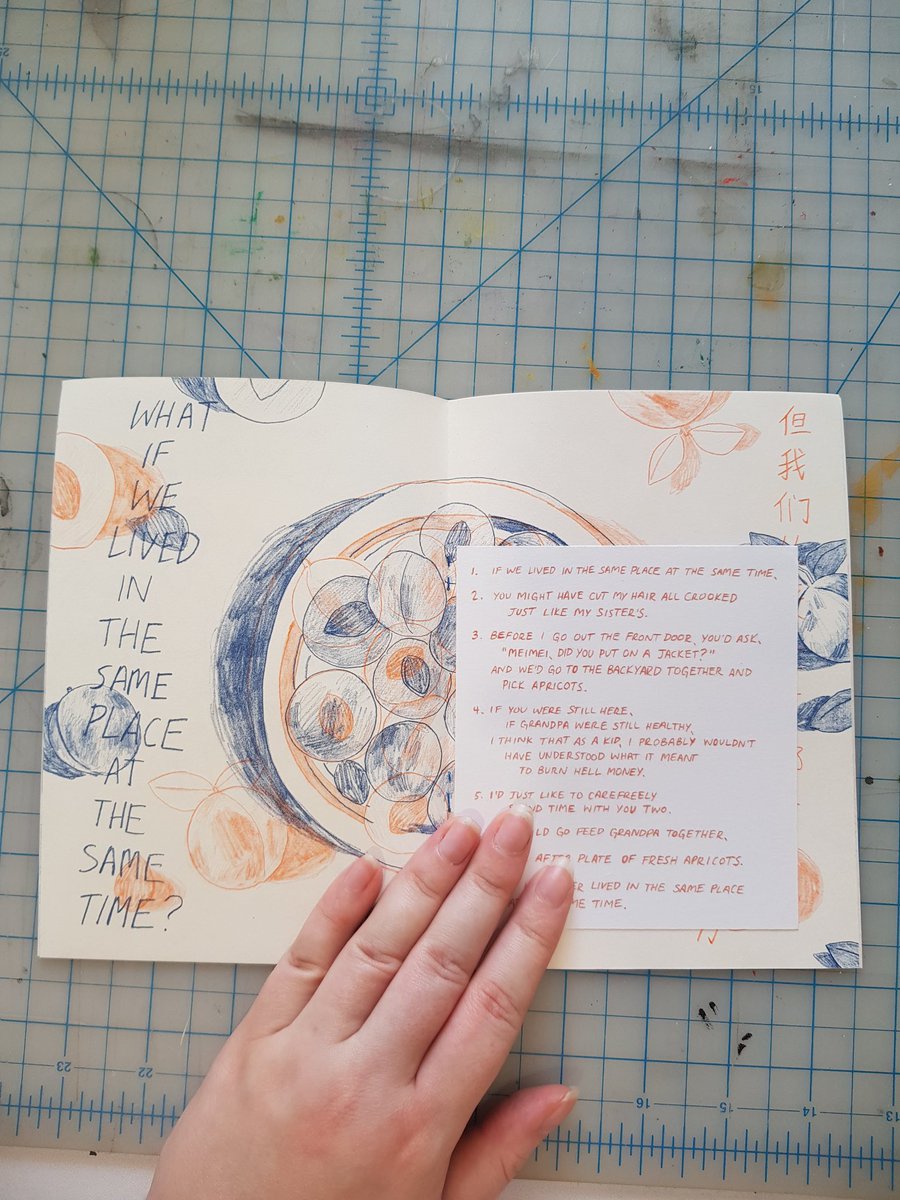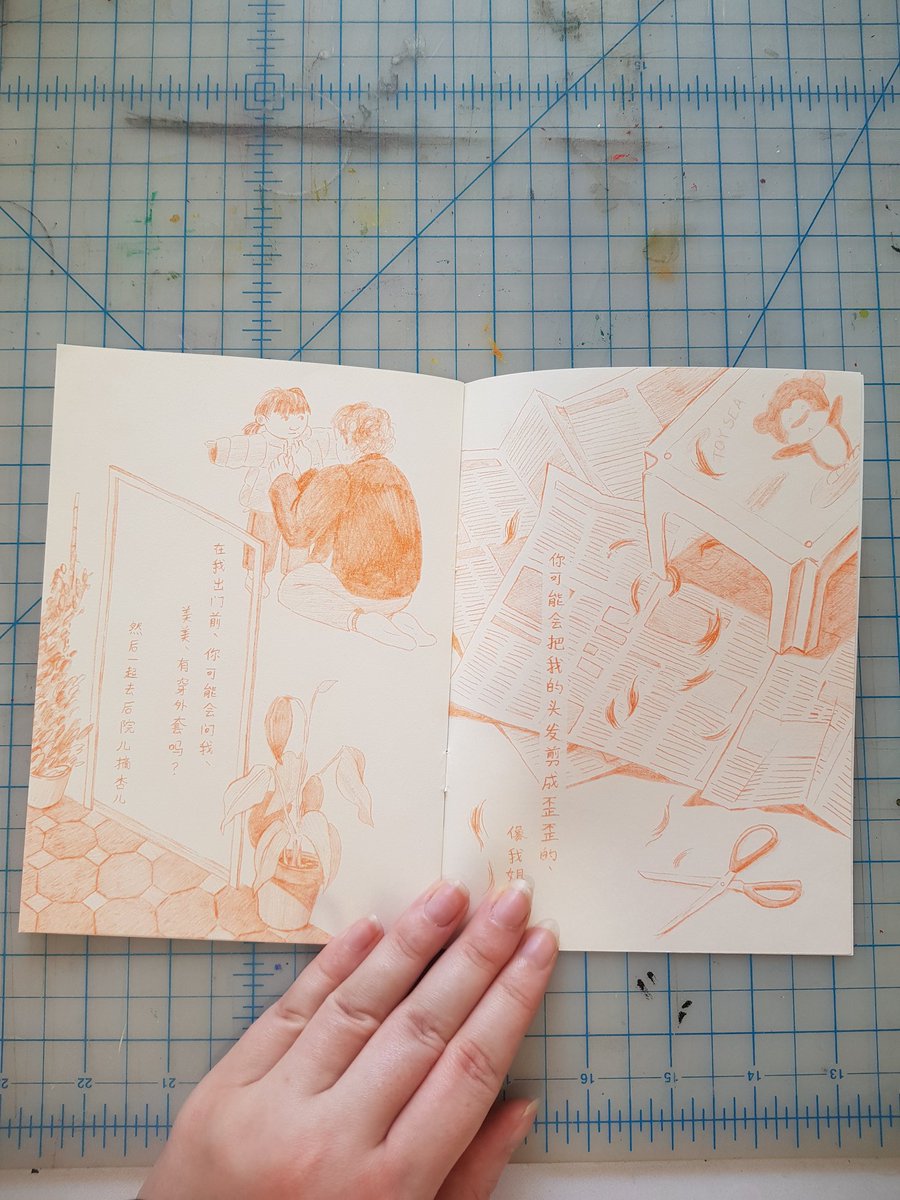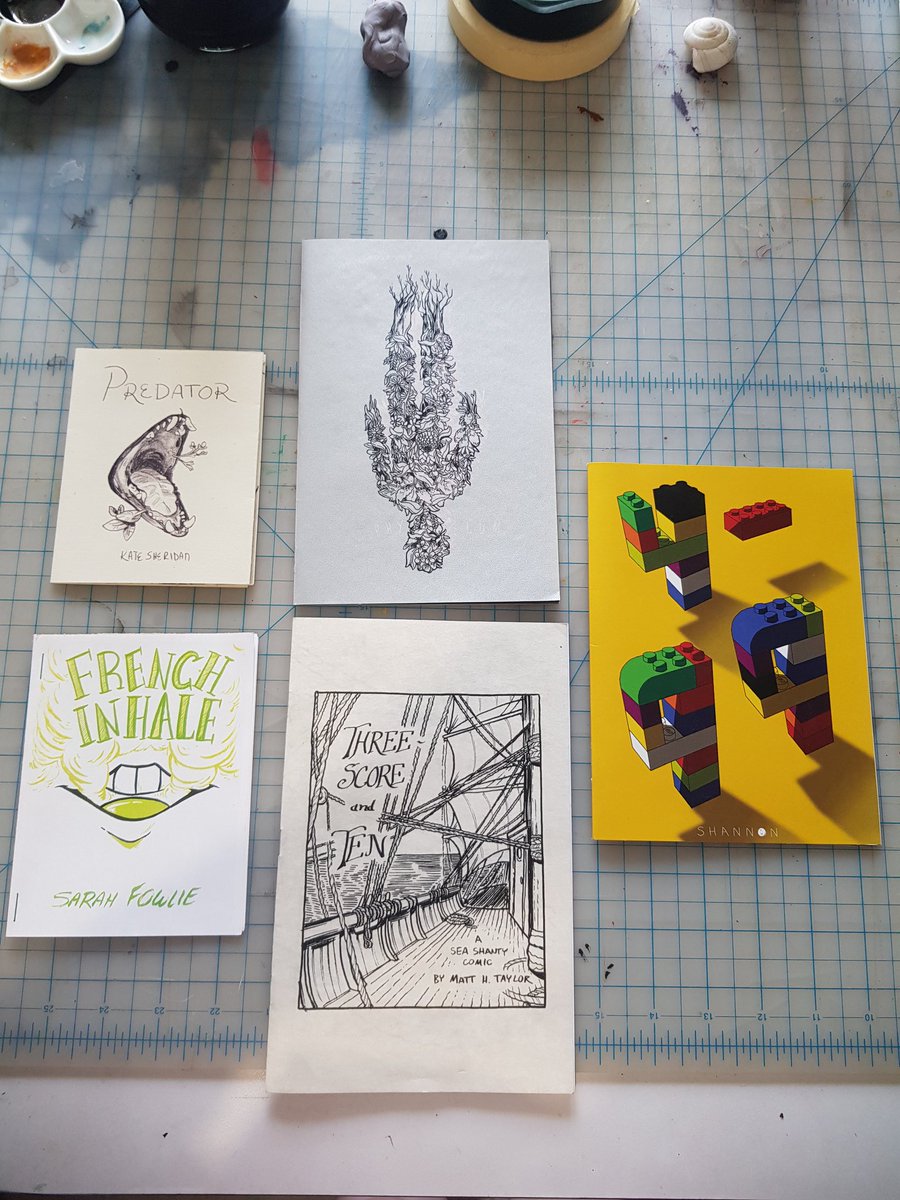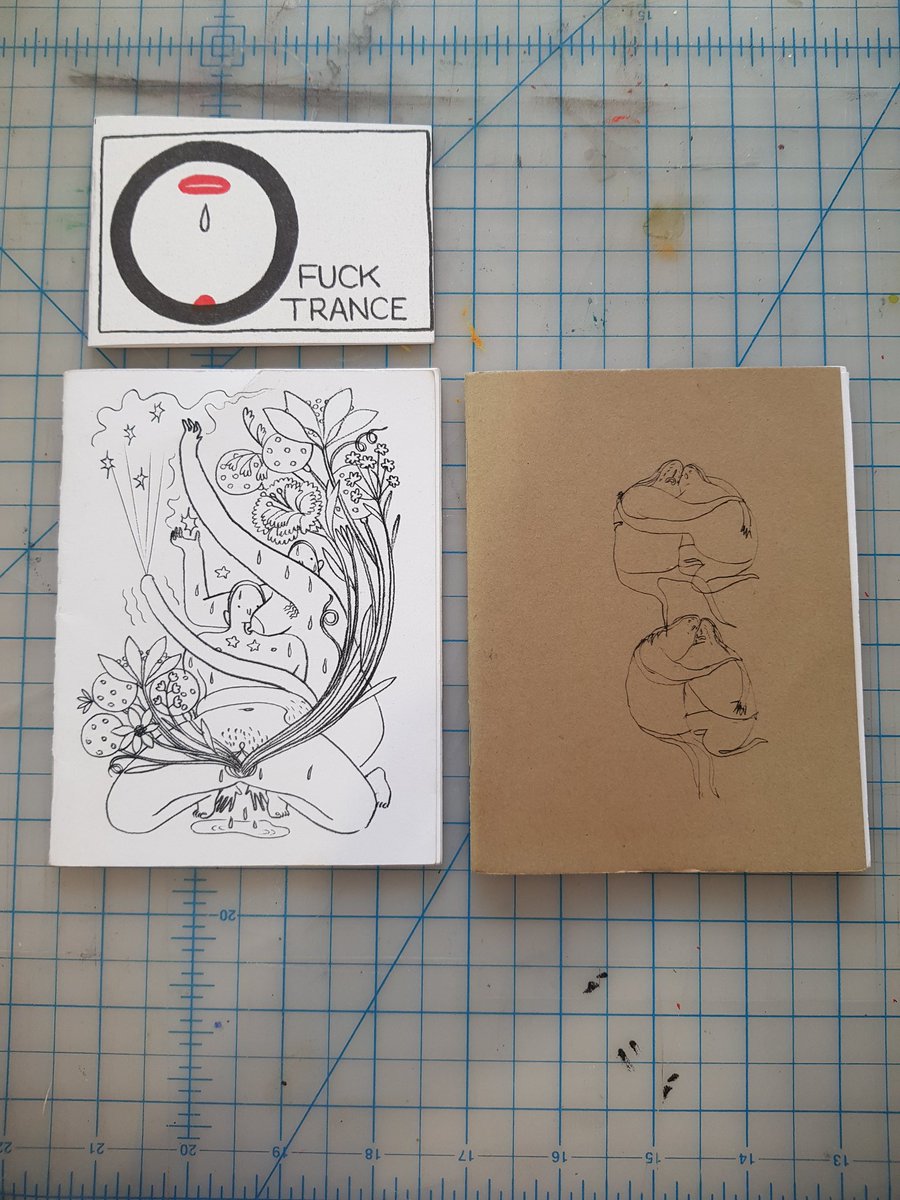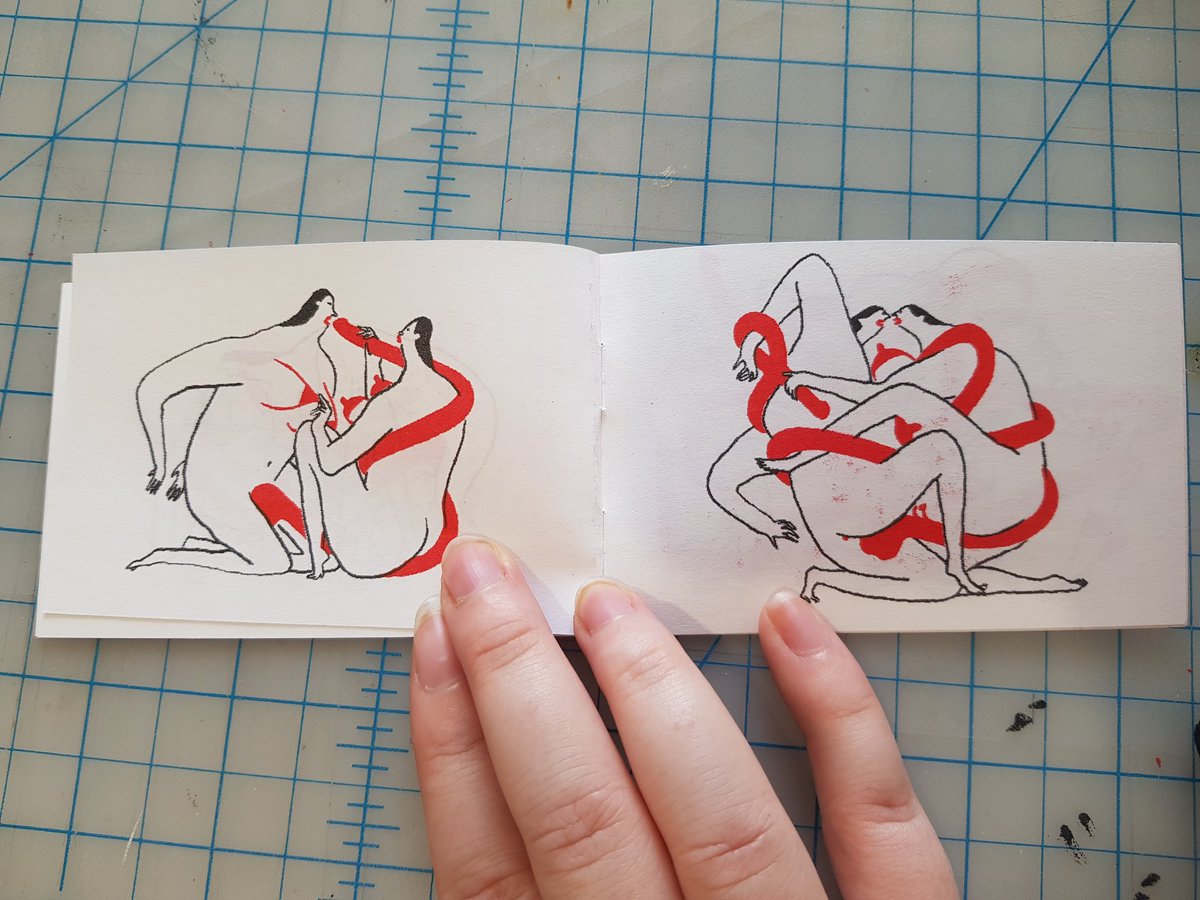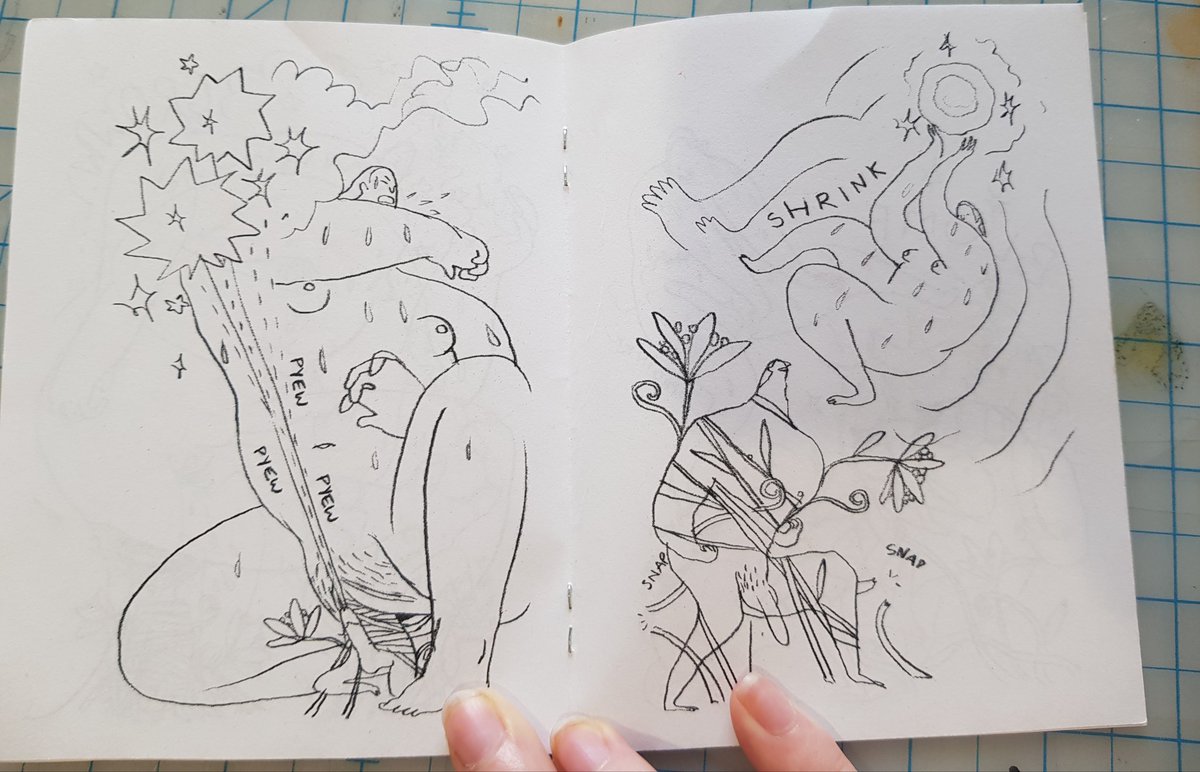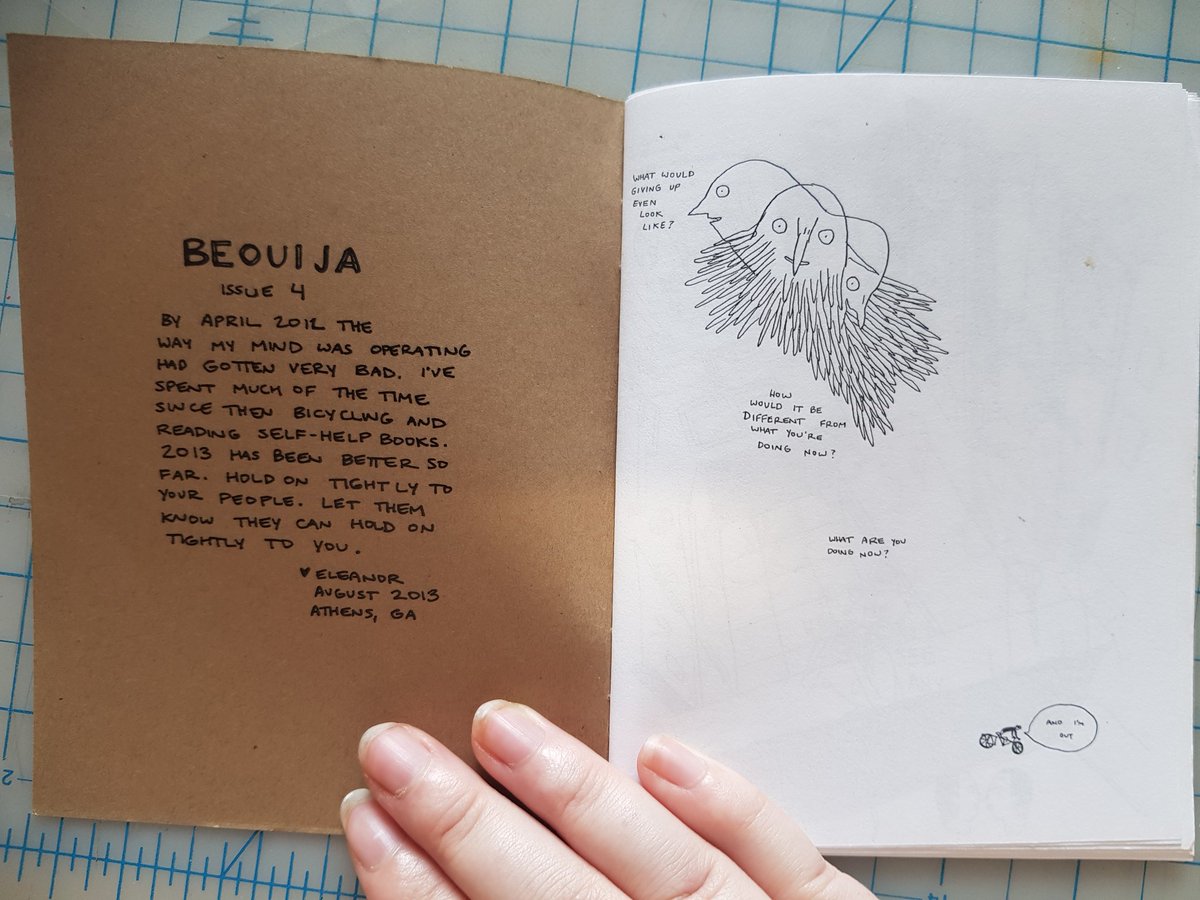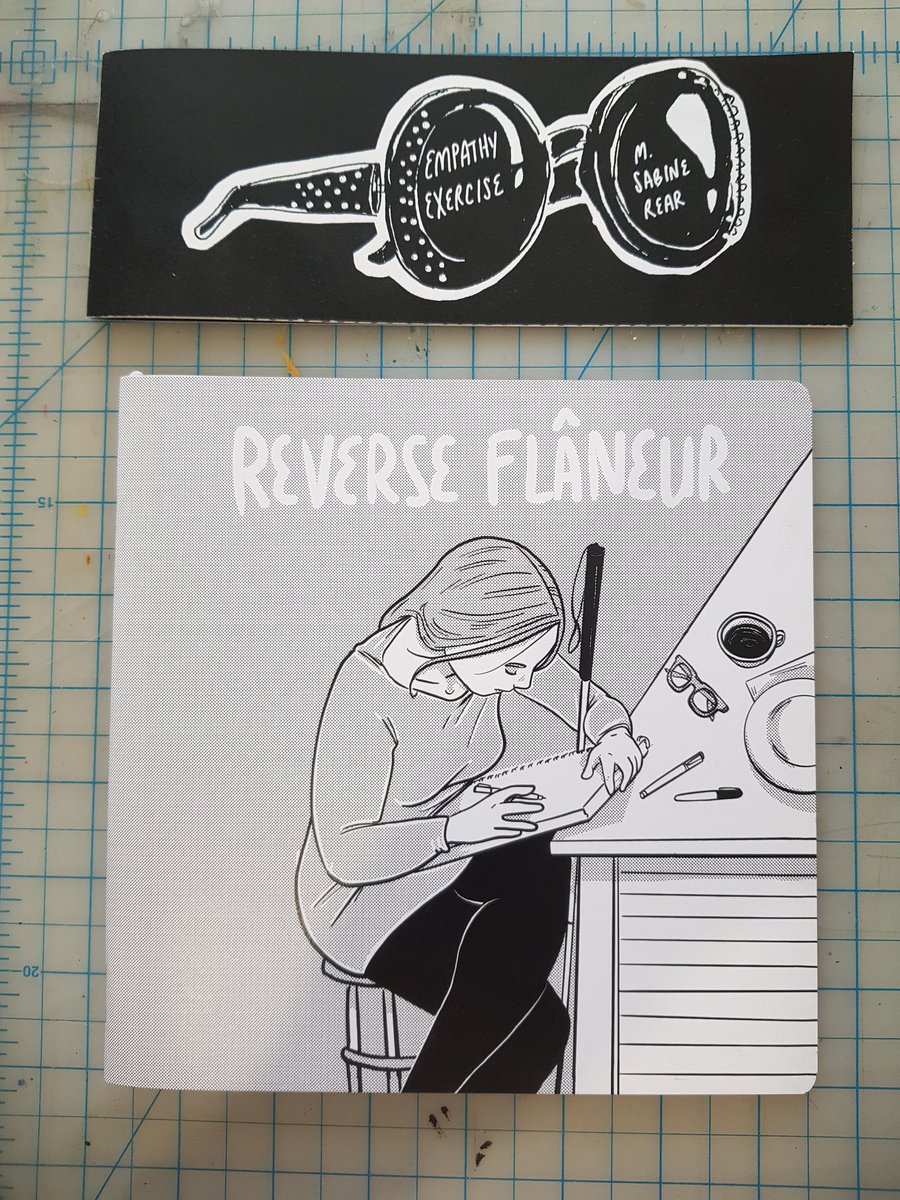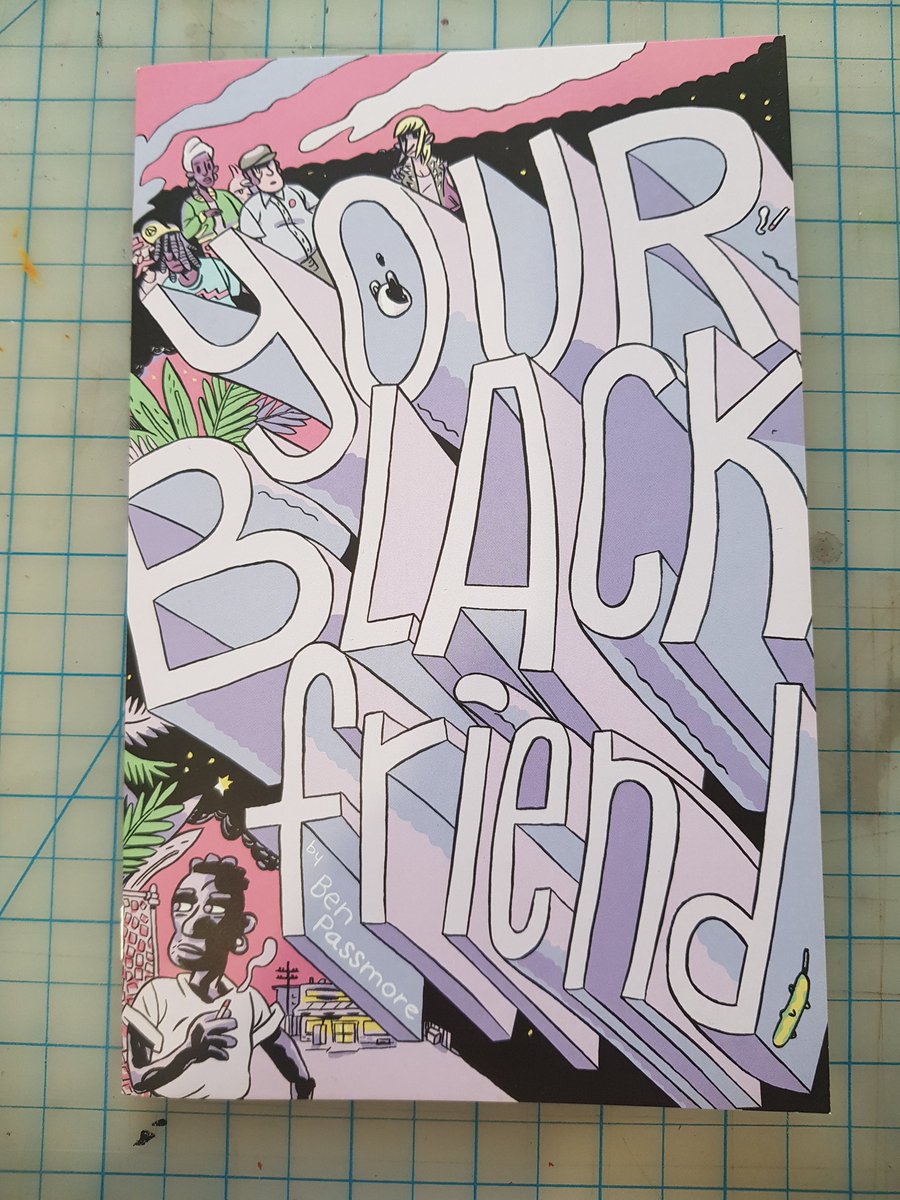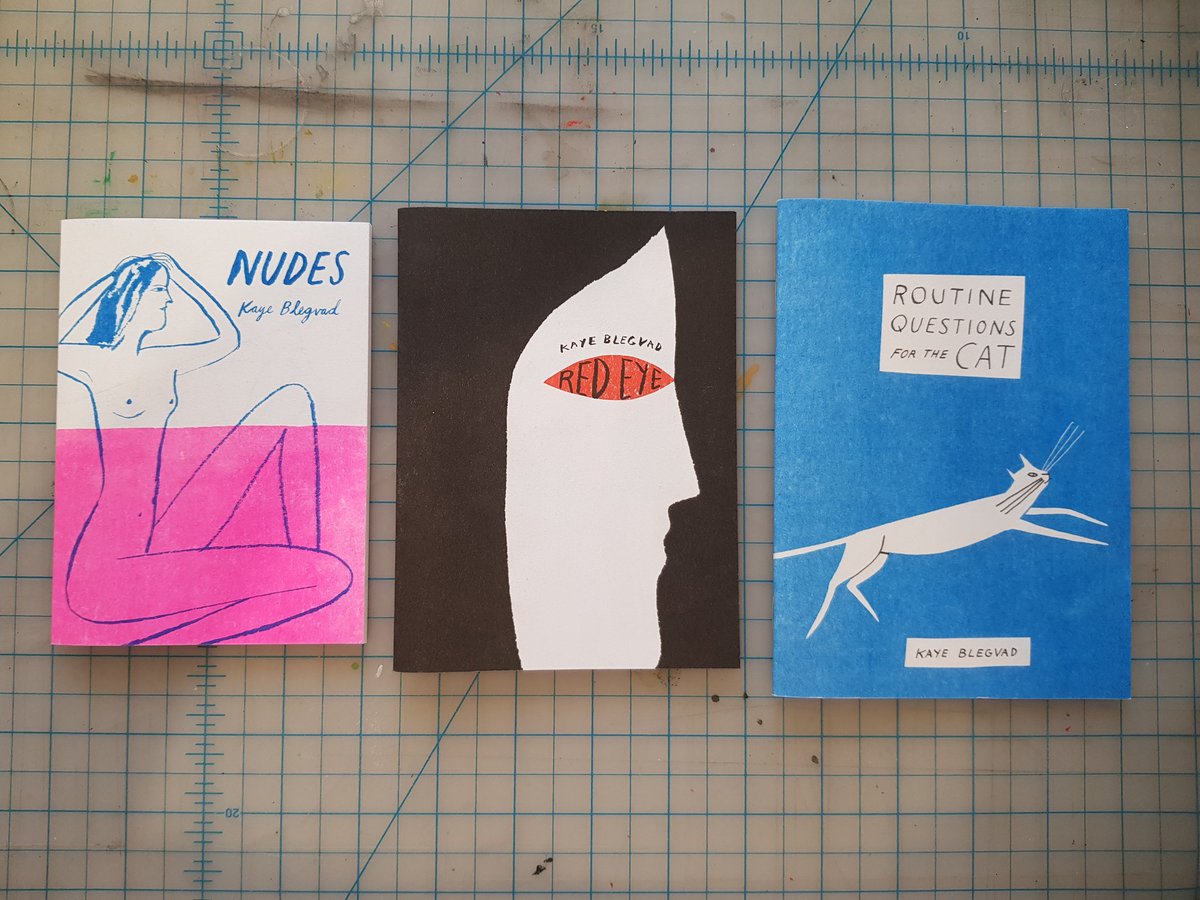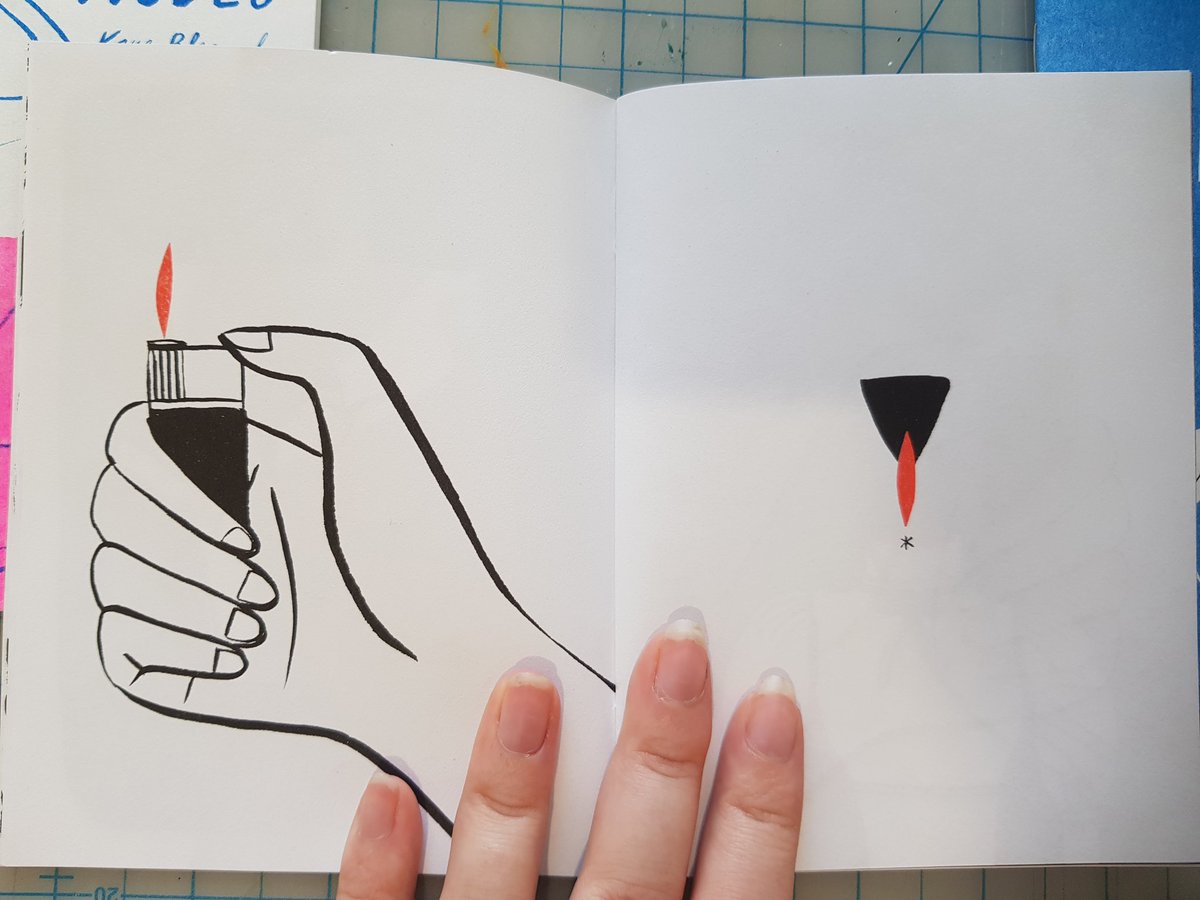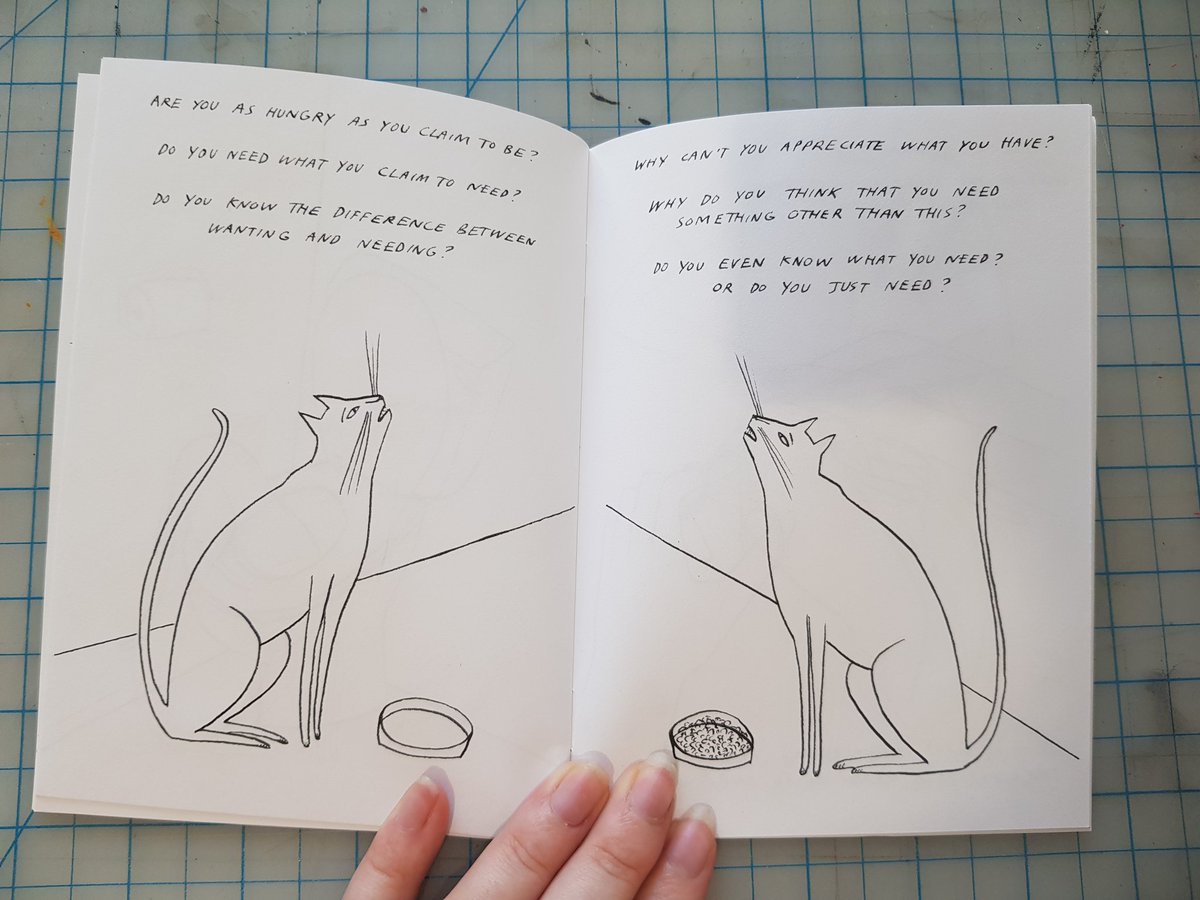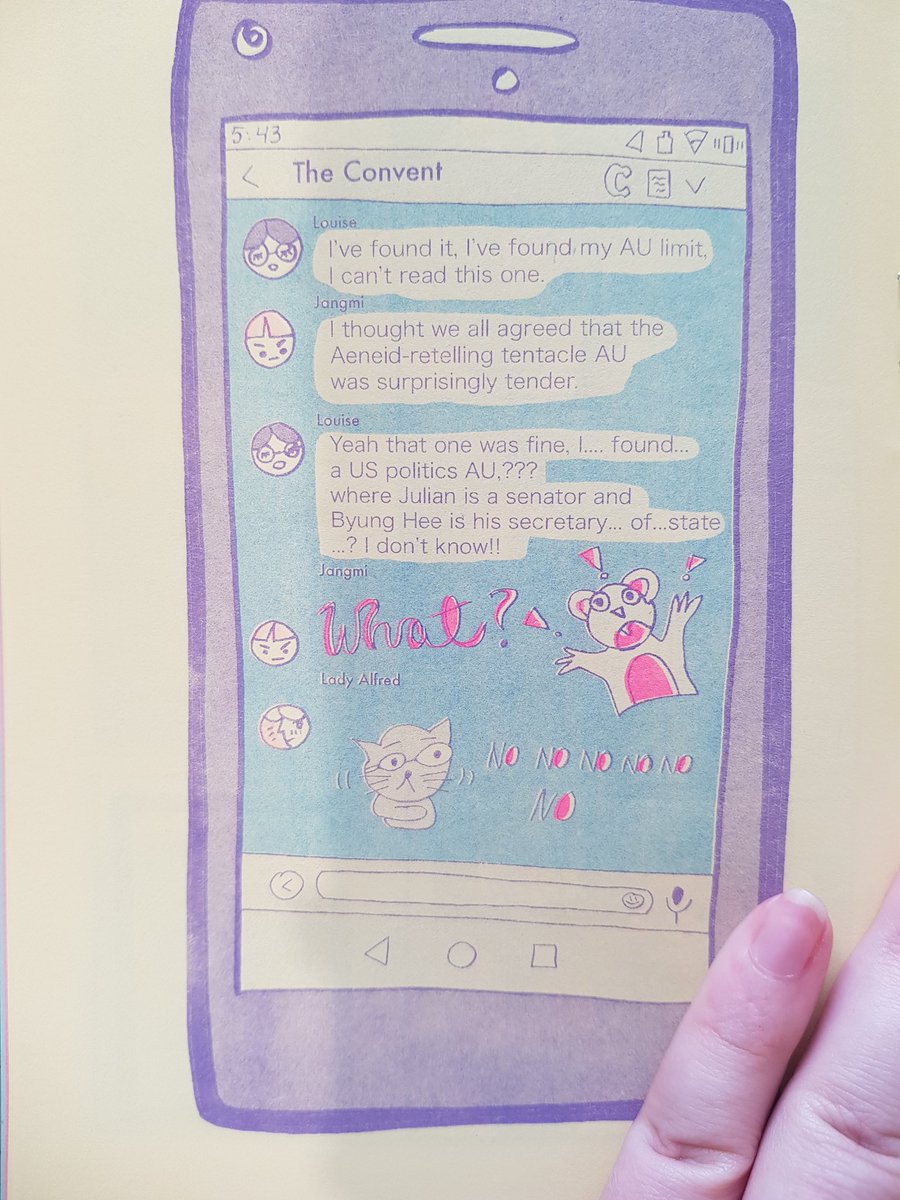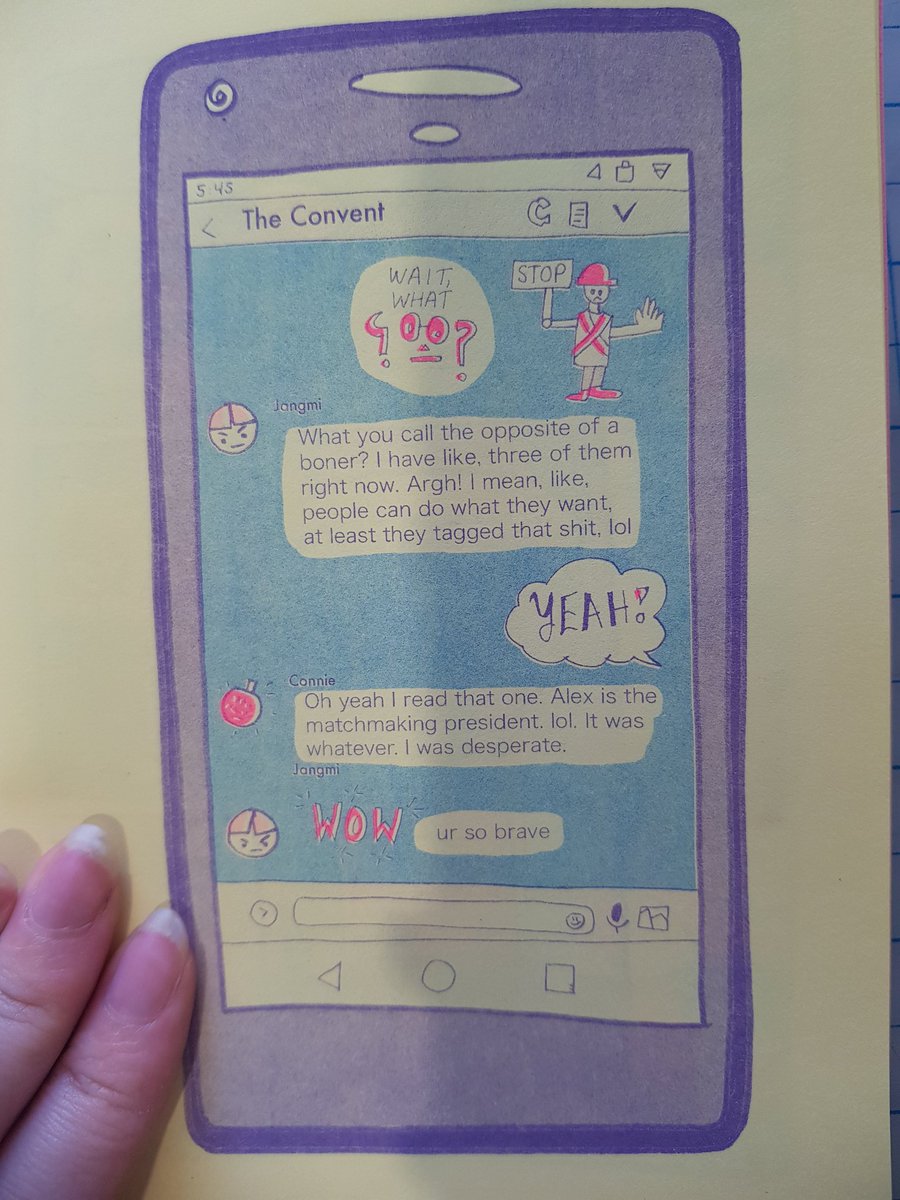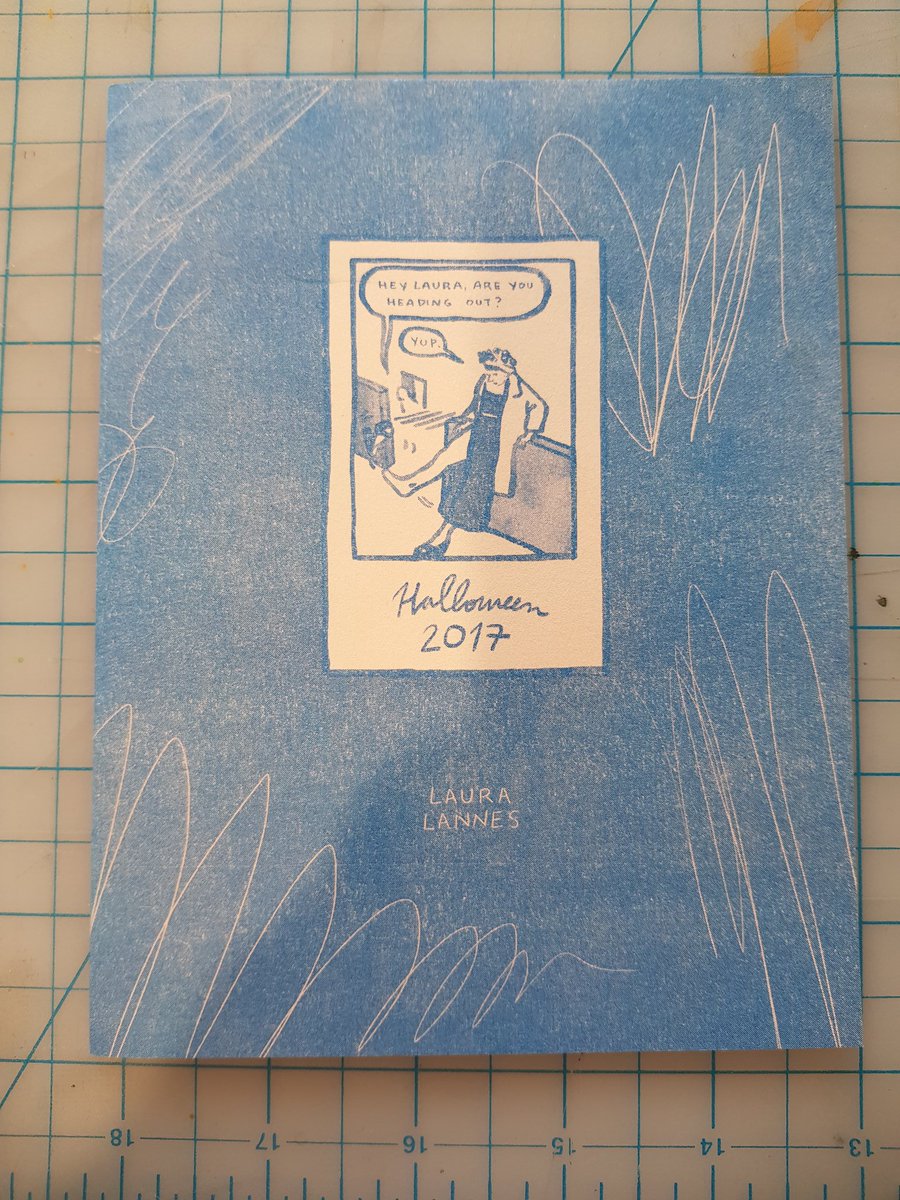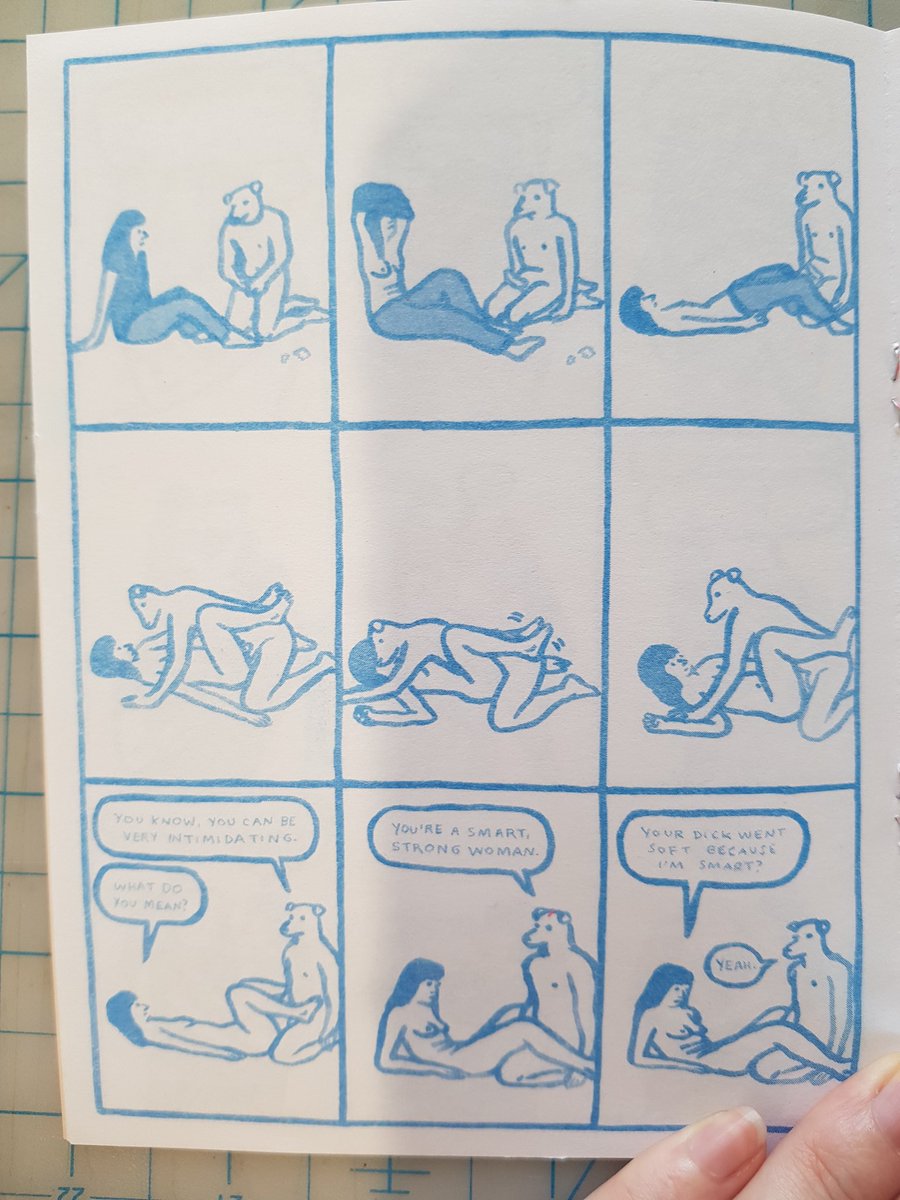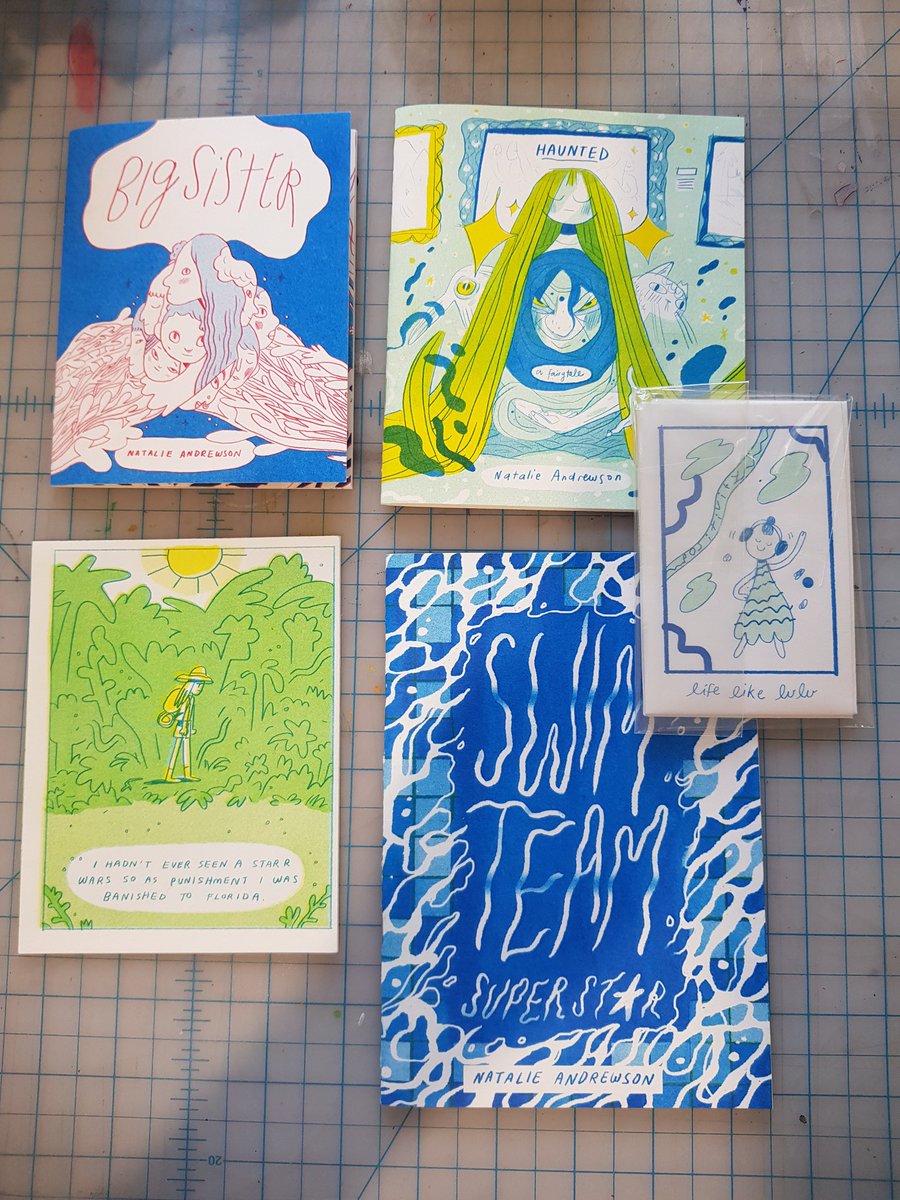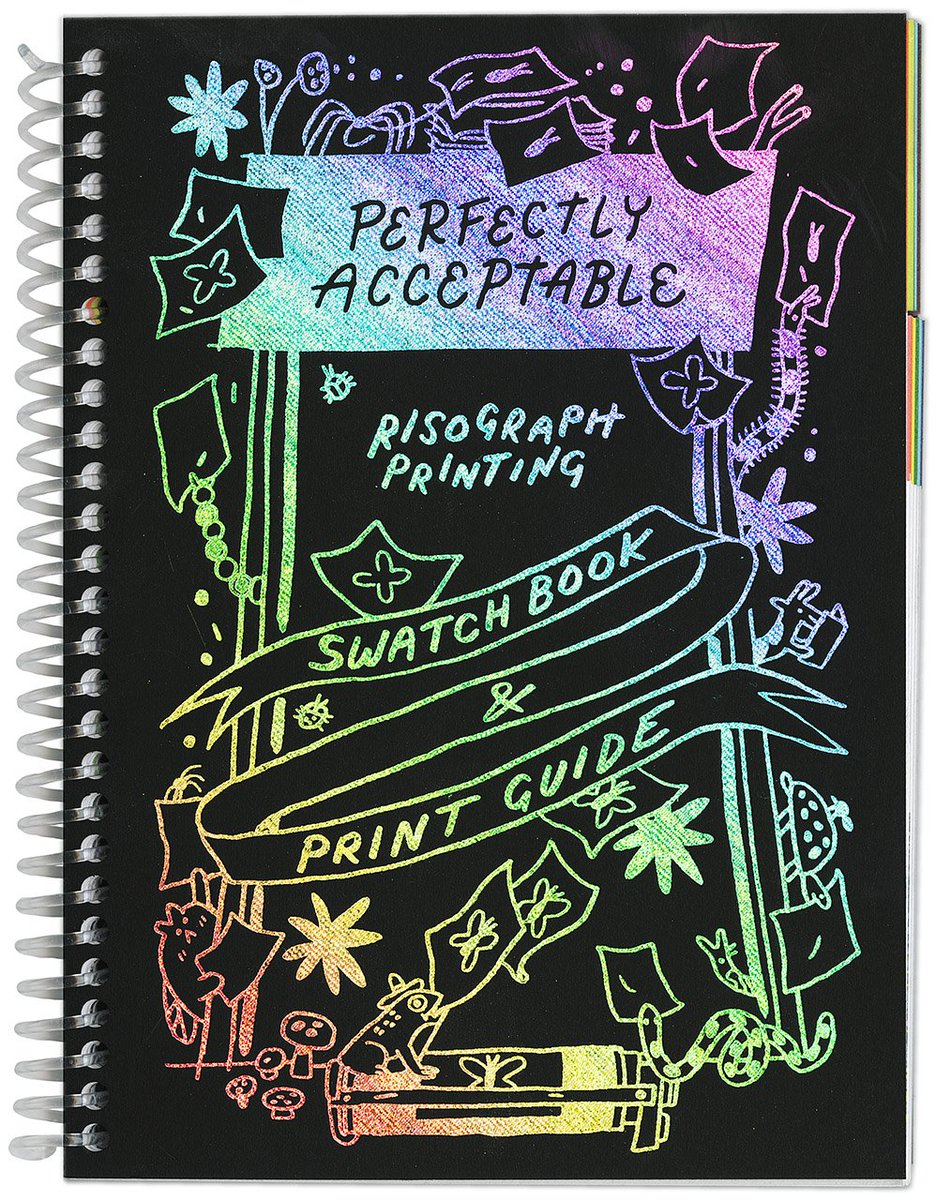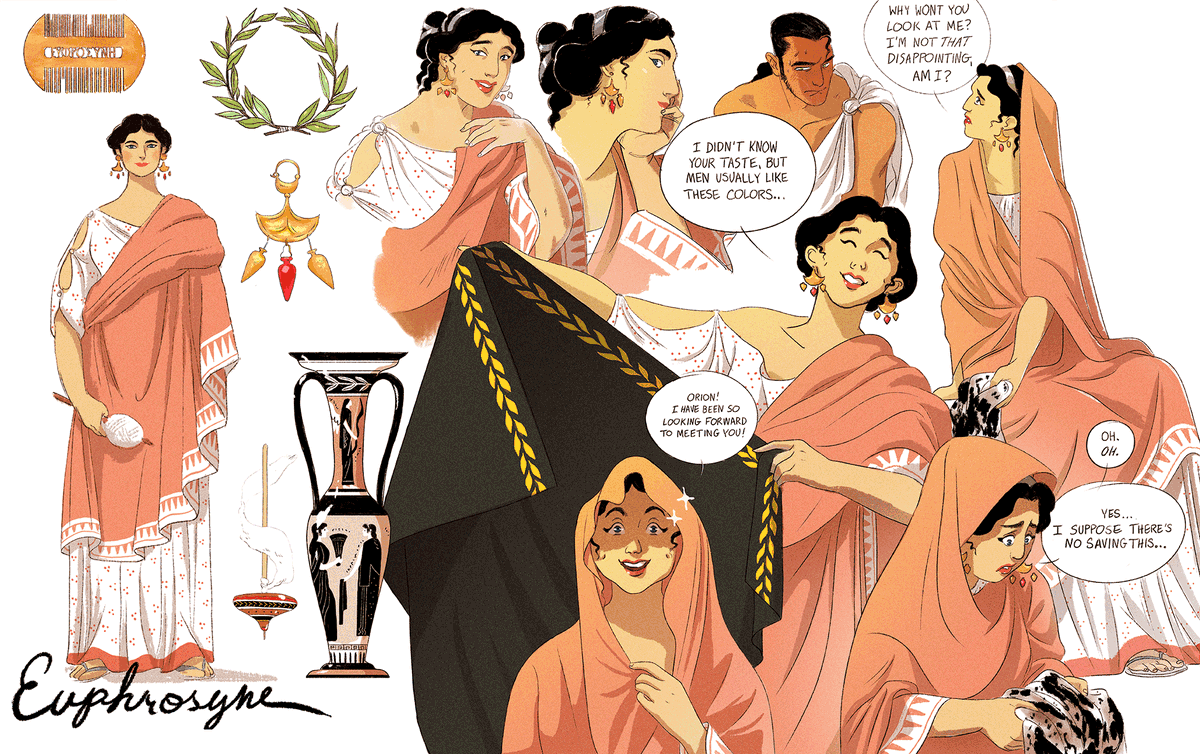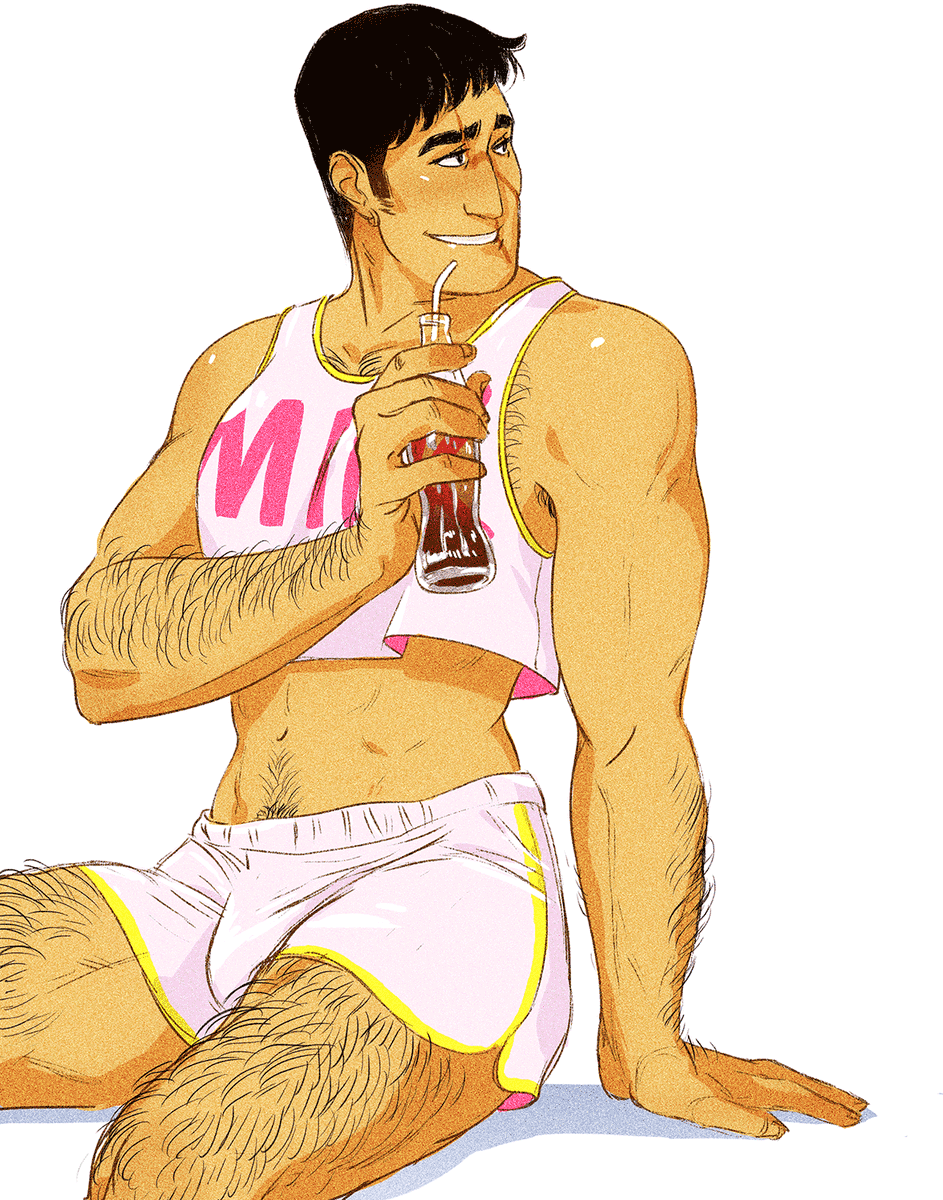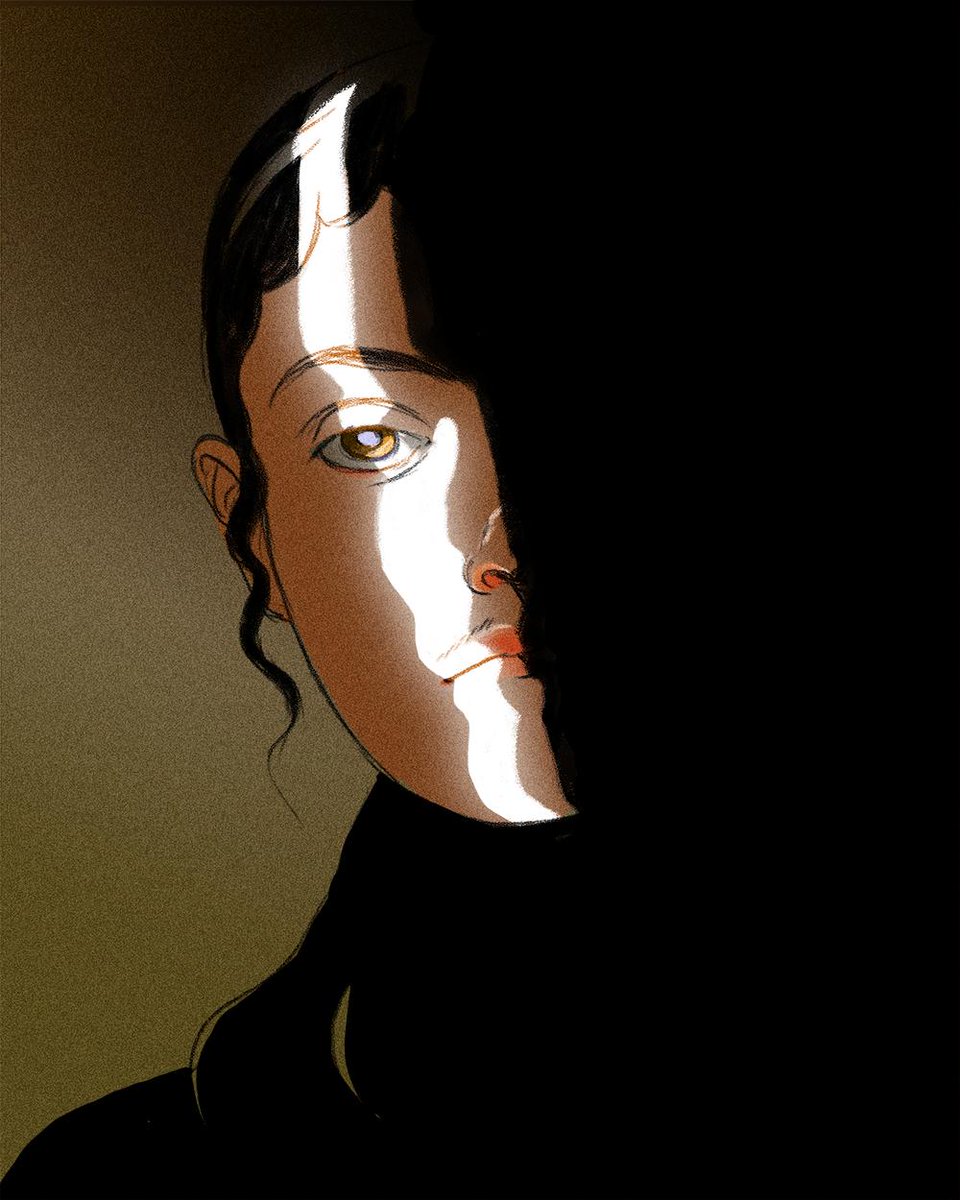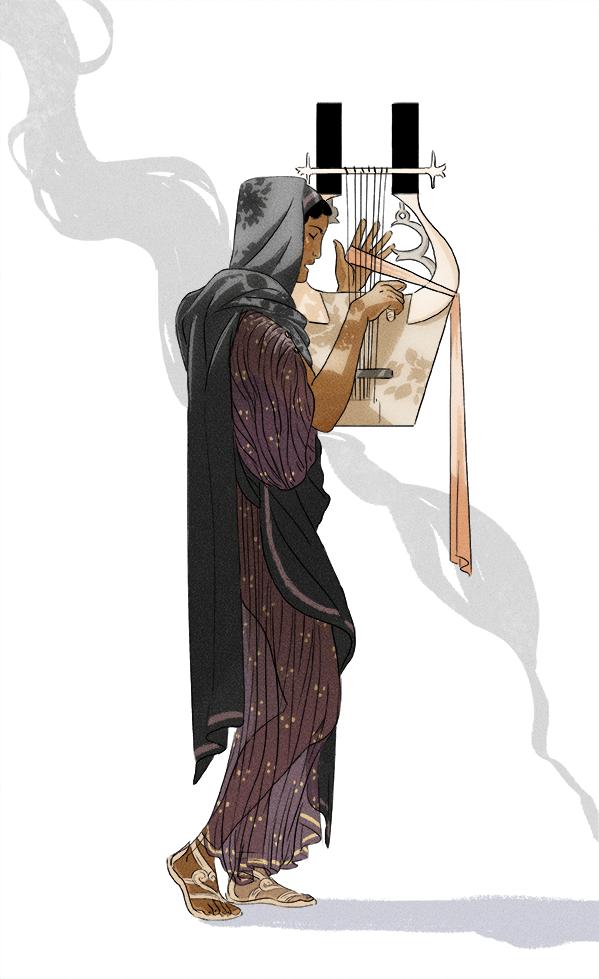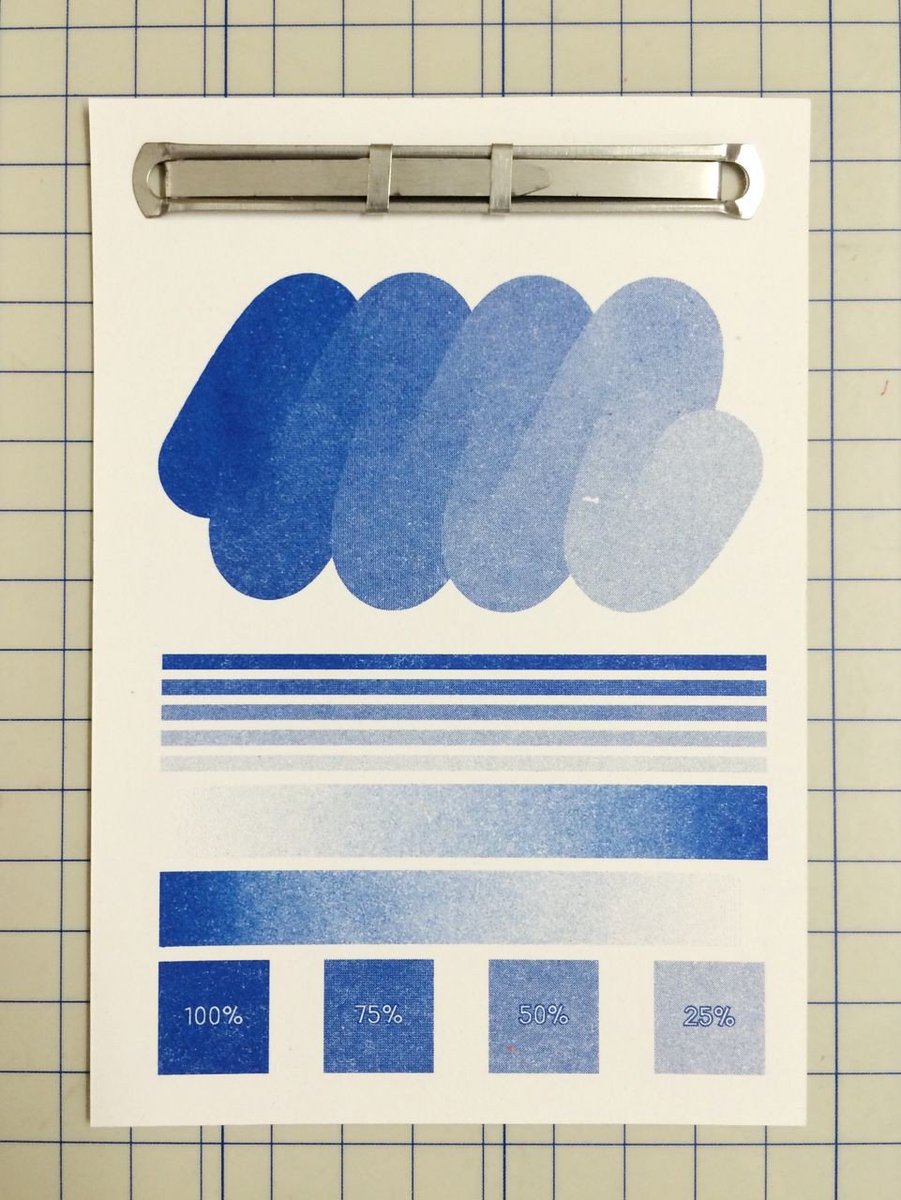Guess I'm making a thread about zines since people seem very confused and defensive about what they are, who makes them, and why. Here's a small sample of the zines I've collected over the years, just the ones I've kept and not given away as gifts.
The thing that really squares my breasts about this Zine Discourse is, like many words Tumblr took and invented new dumbass meanings for, a glossy 200 page full color anthology you had to kickstart the funds to print barely counts as a zine: https://twitter.com/NexusRasp/status/1159277982051000321?s=19
The Very Bad Take I'm seeing is that zines died out in the 90s at precisely the moment Kurt Cobain ended his life, and to suggest we abandon online spaces in order to resurrect this dead art form is elitist and counterproductive.
No one is telling you to abandon twitter in order to make zines in obscurity. But if your entire identity as an artist exists solely online, you are extremely vulnerable to the whims of venture capitalists who run these platforms, LIKE JULIA SAYS https://twitter.com/thorazos/status/1158556879485906944?s=19
You can follow thousands of people on Twitter and not notice for months if someone you really like quietly disappears. It's a lot easier to treat artists as disposable when your only experience of them and their work is through 72 dpi .pngs and faving their tweets.
The best way to experience zine culture is to:
1. Make a zine
2. go to shows and talk to people.
I think for a lot of younger people this is the root of their negative reaction to Julia's thread, because it involves effort and the possibility of rejection.
1. Make a zine
2. go to shows and talk to people.
I think for a lot of younger people this is the root of their negative reaction to Julia's thread, because it involves effort and the possibility of rejection.
Not everyone has access to shows, but if you're on twitter yelling at me about this you have access to the internet, which means you can still trade and sell zines! You can also look up bookstores who might sell your zines on consignment or ask if your local library stocks them!
You can pretend like making your fear of failure mine and Julia's problem is activism, but
1. Its boring
2. It's not activism, it's a justification to do nothing.
3. Artists who refuse to take risks accomplish little.
1. Its boring
2. It's not activism, it's a justification to do nothing.
3. Artists who refuse to take risks accomplish little.
The first zine I ever read was printmaker and bookbinder Abigail Uhteg's "Bookbinding for Beginners", all the way back in 2006. I carried it with me like a talisman; it opened my world.
My first zine, "Over You Nanook," came a few years later. I had just fallen in love with knitting, and there was a hidden trail behind my house in the woods that followed a river to a massive log jam. I wanted to practice my inking skills, so a zine was born.
I printed "Over You Nanook" on my home printer. It took 2 11x17 sheets of paper, trimmed, cut, folded, and carefully taped together at the spine. If you split the tape and opened each signature up, they formed a poster on the reverse side:
I sold it for $6 at SPX and gave it out to artists I admired as a young nobody new to the scene. I felt a sense of accomplishment and belonging, and to this day people still come up to me at shows and remember me from that zine they bought years ago.
I was told from the start not to expect to make a profit from my zines, that I should do this because it's fun and a cool way to make friends with other artists, and that working with the constraints of the medium would help me grow as an artist.
I get the pressure to monetize every ounce of creative output, but keep your costs low and you can let go of that pressure. Art that's made primarily to sell is insincere, bland and generic, the small press equivalent of art made to hang in hotel rooms.
Not only do you give yourself room for play, exploration, creative problem solving, and learning how to deal with low stakes failure (an essential quality in an artist, imo), you will also discover new art you love and experience the transformative power of it through this medium
I went on to draw several short comics and do small, $300 print runs of them that I funded with money from my day jobs and later the profits from my illustration work and etsy shop. Some of the people who bought my zine blogged about my new stuff. More people bought my comics.
Some of the most talented people in this scene work day jobs to live, are single parents, parents of special needs kids, have lived with and through harrowing violence, trauma, and crushing poverty. I feel so, so lucky to be able to read their work, to own a tangible form of it.
And it's possible for them to make this work because making zines doesn't have to cost much money, and because an organized, real life community exists to support that work and validate it.
So yeah I get
a little
mad when someone clearly raised on the internet
whines about how
we're not doing enough
to make zines accessible to them.
a little
mad when someone clearly raised on the internet
whines about how
we're not doing enough
to make zines accessible to them.
The rest of this thread is going to be me showing you zines from my collection so hopefully you can get an idea of what a zine can be, the many ways they can be made, and hopefully discover some new artists to fall in love with!
I'll start with my latest zine, Aphrodite's Pavilion. I made this after I realized I wanted to be an erotica artist, and it was my first experiment with Risograph printing which I would only know about *because of zine culture*.
If you want to know more about Aphrodite's Pavilion, here's the making of thread: https://twitter.com/celineorelse/status/1031881249835700231
Julia's work changed me, made me look at art in a completely different way than I had before. Her drawings are exquisite. Her process is exactly as she describes in her post, though sometimes she'll get fancy with a screen printed cover. @thorazos
Pretty sure everyone I've seen with a Bad Zine Take has watched Steven Universe, but I wonder if they know who @sbosma is? He was a background artist on the show, and has made some super fun zines! FB has a screen printed cover and I think a riso interior.
Ann Xu's "Same Place Same Time" was the first time I'd seen my own experiences of alienation and longing as a first generation immigrant cut off from my extended family reflected in someone else's work. I sob every time I read it. @epershannd
A lot of zines in my collection are about artists flexing their muscles and playing with ideas in a low stakes context. Some of them are trying out different materials and bookmaking methods. @killswitchkatie @whotookfowlie @MattHTaylor @shannondrewthis Rosemary Valero-O'Connell
Eleanor Davis should be a household name. She does important, ambitious work, but her zines are so precious that "fuckwizards" was the one comic i put in my backpack when I moved to France. Her way of talking about depression and creative block helped me so much. @squinkyelo
Sophia Foster Dimino is one of those artists i hoped to befriend when I first started making zines, and getting to know her privately has been such a joy. Her high emotional intelligence and careful, deliberate approach to art inspires me every day @hellophia
M. Sabine Rear is a blind artist whose work I recently discovered. I love the quality of her drawings and the way she talks about art, disability and ableism in both a practical sense and as theory. Please check out her work! @michaelsabine
Your Black Friend is gorgeous, painful, cutting work that should be in everyone's hands. Passmore expertly illustrates the constant strain of living as a Black man in America, the fear and frustration with whiteness and the complexity of racial identity. @DAYGLOAYHOLE
Kaye Blegvad is one of those artists who applies her spare, elegant sensibility to everything she touches. Its playful, erotic, and at times sharply introspective without ever losing its sense of humor. Beautiful little risographed zines. @kayeblegvad
Rotten Roses by @aprilangelica is one of those achingly heartfelt personal zines that make me so in love with this culture. A love letter to fujoshis, I am glad this zine exists.
No one speaks more eloquently or with as much expert visual economy on the bleakness of modern heterosexual courtship than @LauraLannes . I love her so much.
Natalie Andrewson's work with risography and experiments with zine formats has had a huge influence on me, and I feel SO lucky to have befriended her irl. I'm so excited to see what she makes next! @natAndrewson
For both Over You Nanook and Aphrodite's Pavilion I used the same zine making technique, which I learned from this tutorial in Rookie Mag: https://www.rookiemag.com/2012/05/how-to-make-a-zine/
If you want to learn more about Risograph printing, @natAndrewson collaborated with Perfectly Acceptable press on a swatchbook and complete guide to this printing method I highly recommend buying: https://perfectly-acceptable.com/item/print-guide/
Finally, I have spent all day on this thread. It would mean a lot to me if you would check out my patreon and, if you have the money to spare, subscribing to it---I have an expensive move coming up and could really use the support. THANK YOU! https://www.patreon.com/Celineloup
More on what makes risography special, with some examples https://twitter.com/celineorelse/status/1159585197102444548?s=19

 Read on Twitter
Read on Twitter